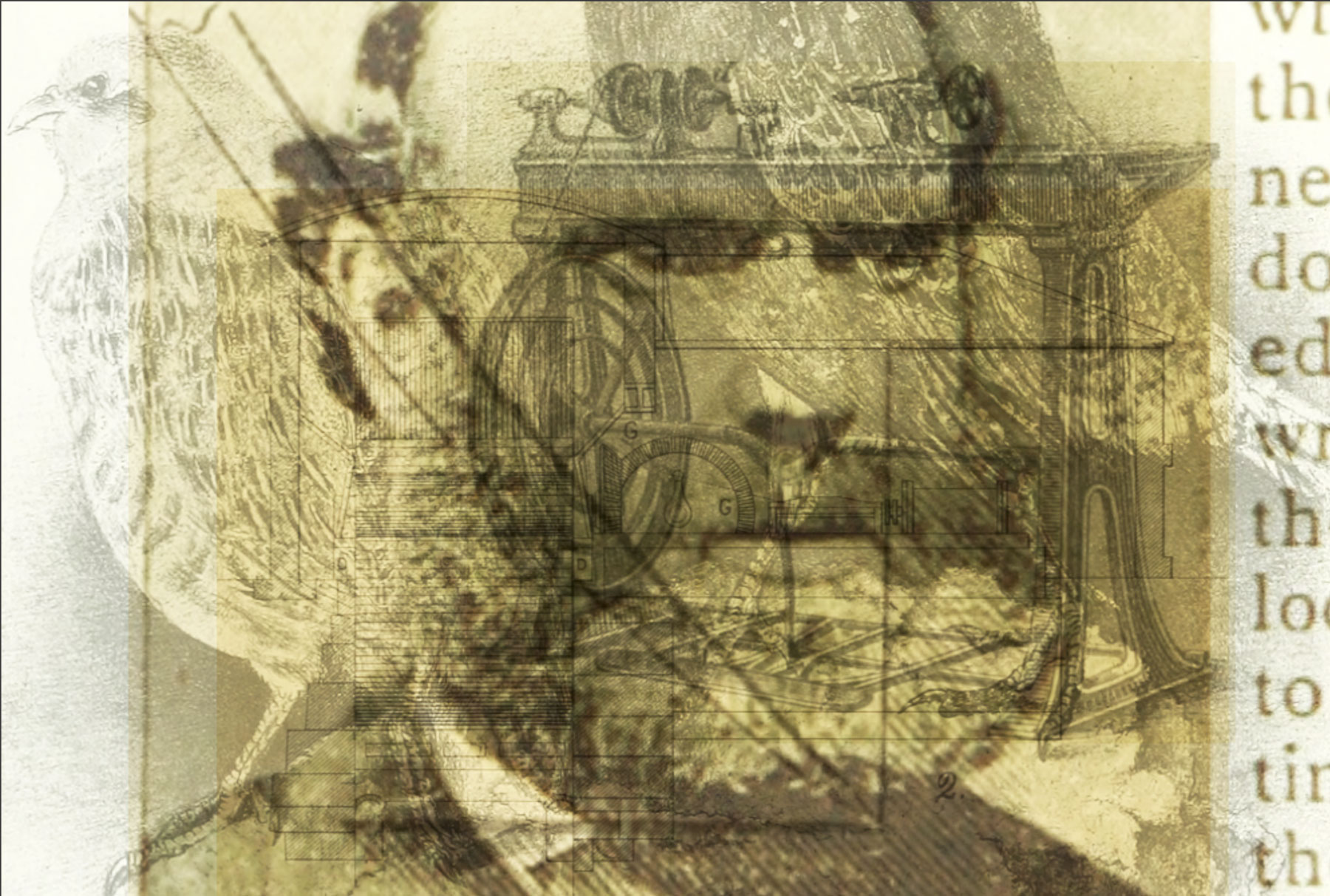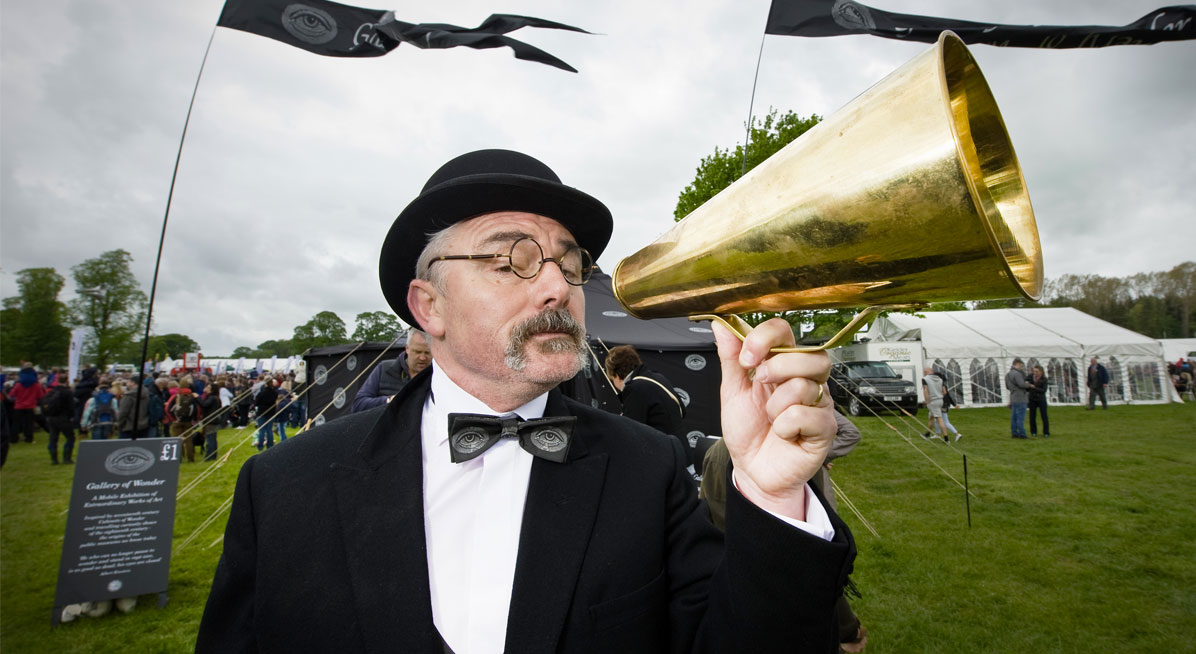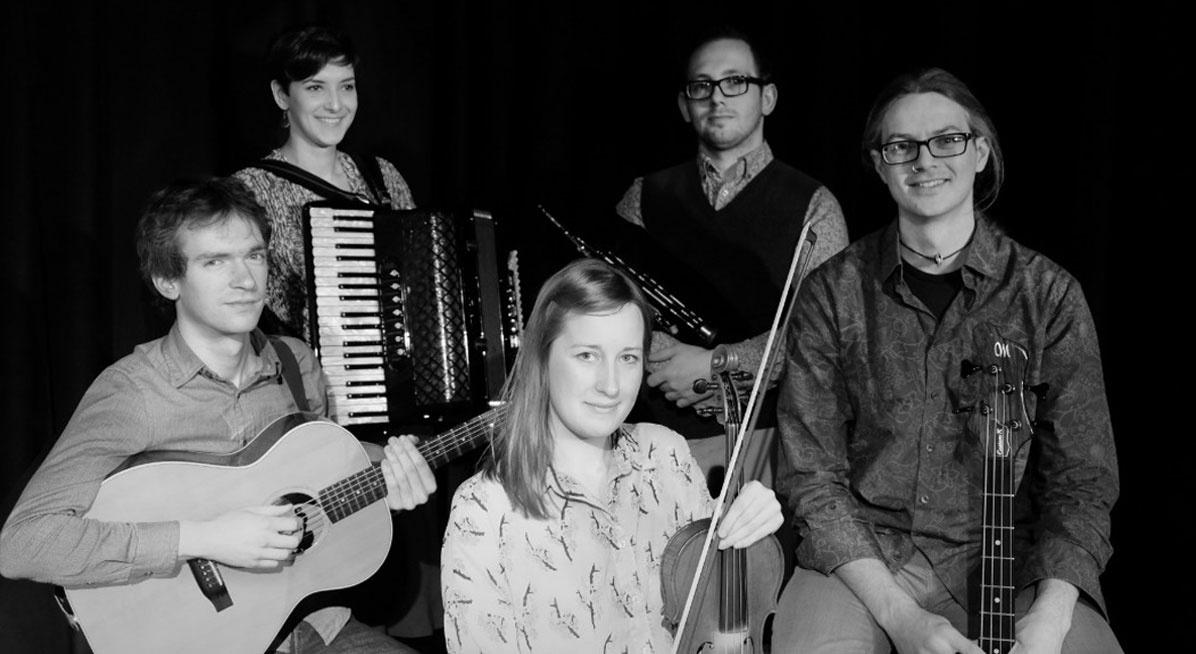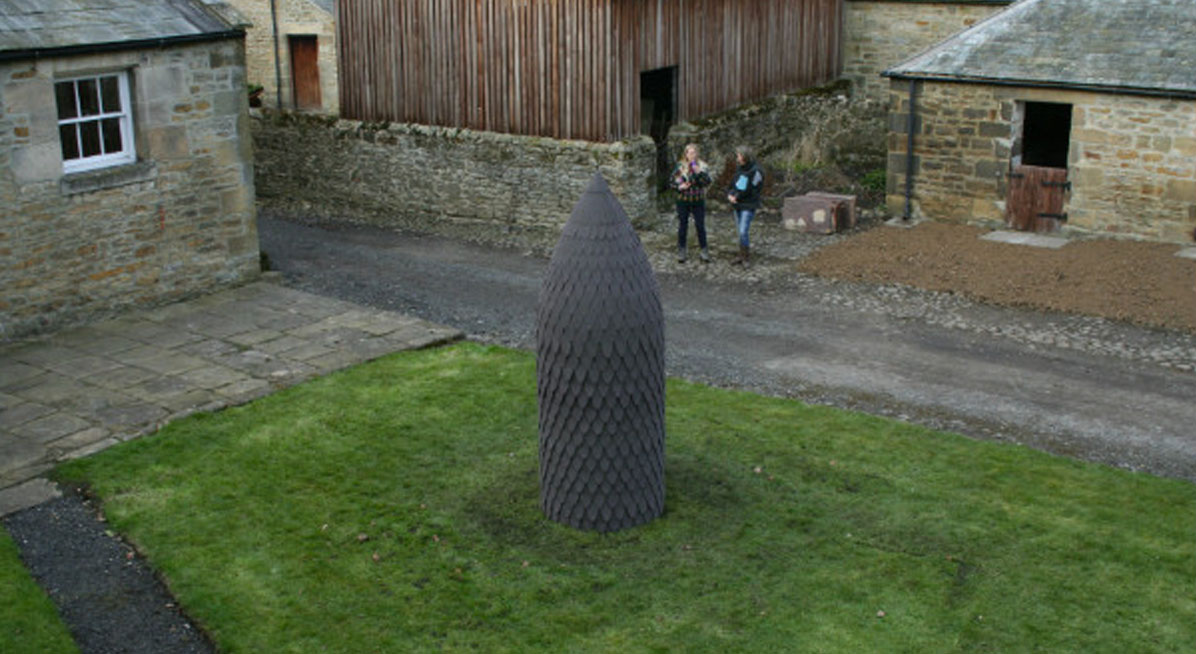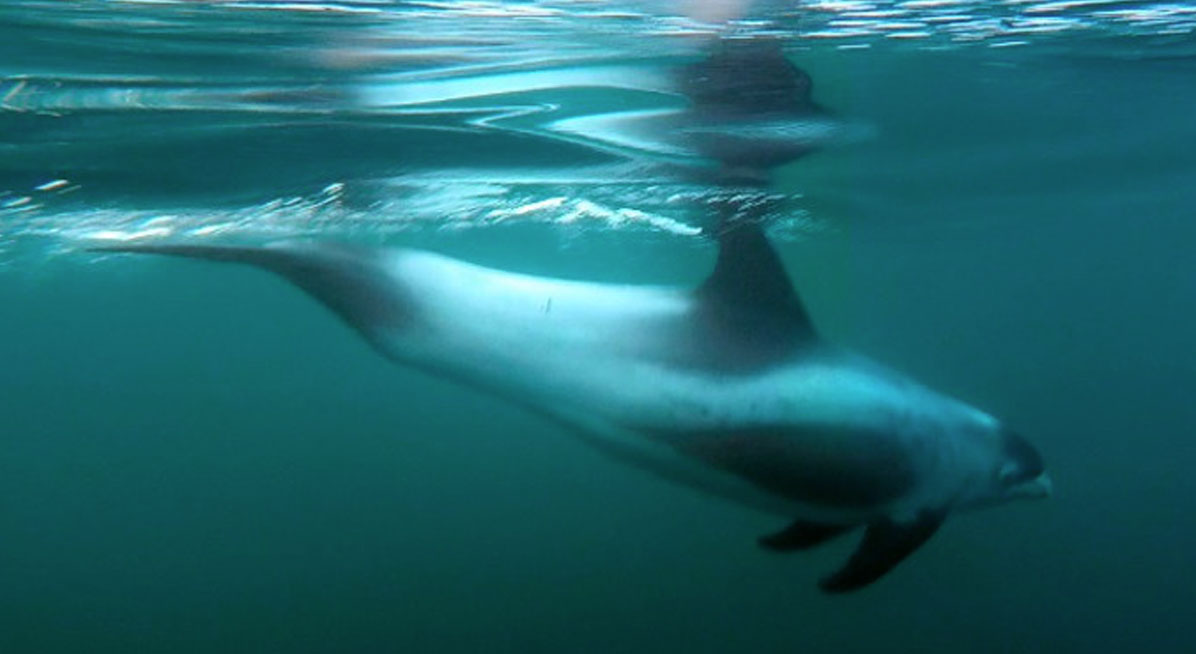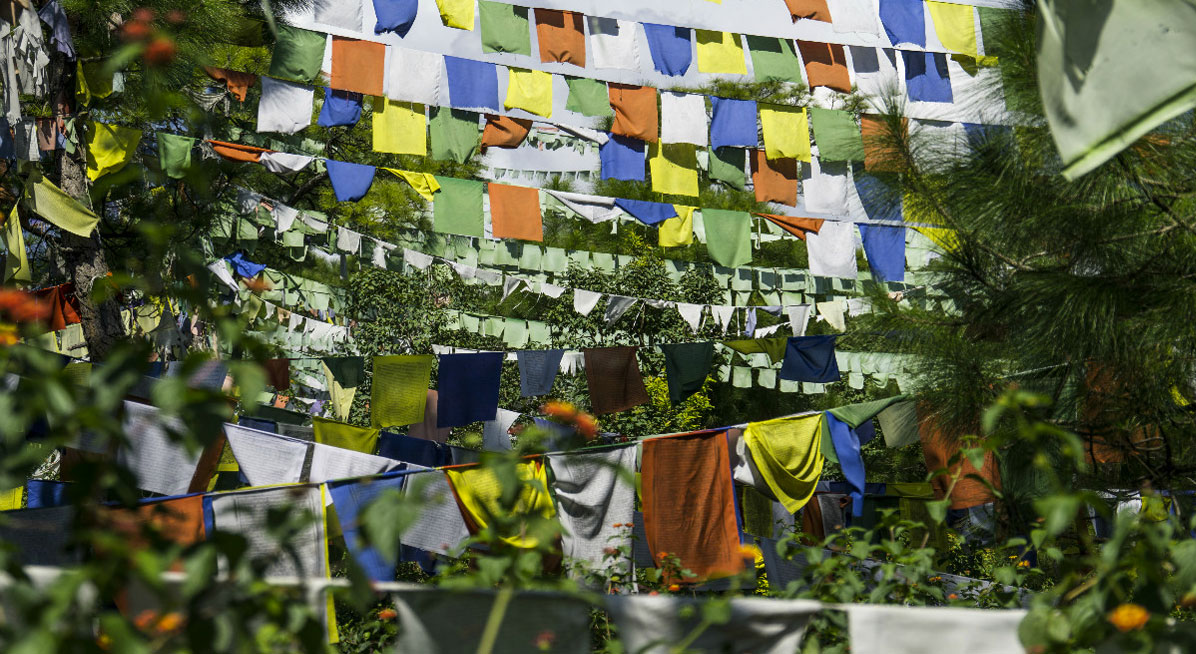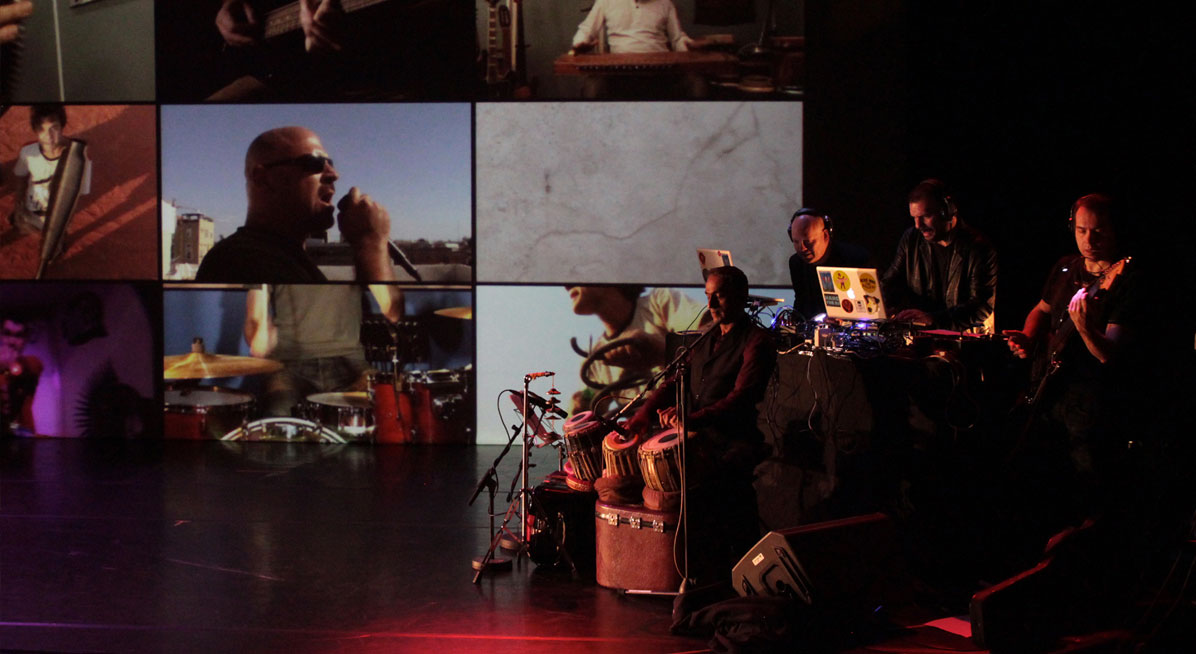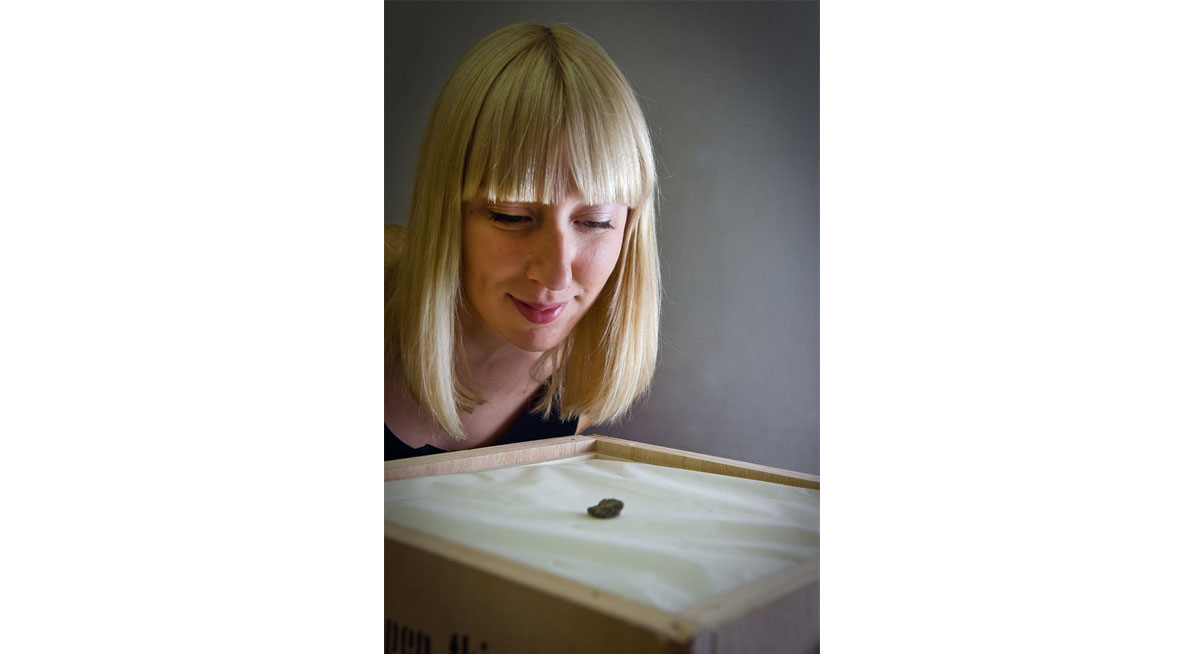Past Projects
Explore our archive of past projects
Celebrating the hand-made in Uganda - Prof Andrew Burton and Dr Lilian Nabulime; July 2015

Based at Makerere University, artists Professor Andrew Burton and Dr Lilian Nabulime researched local materials and hand-making processes. They developed new work at the intersections of Fine Art and craft and artisan practice.
Their work was exhibited at the Makerere Gallery, Kampala, in July 2015. and the process documented for publication on the web and elsewhere.
Returning the Ear - Tim Shaw and Jacek Smolicki; February 2017
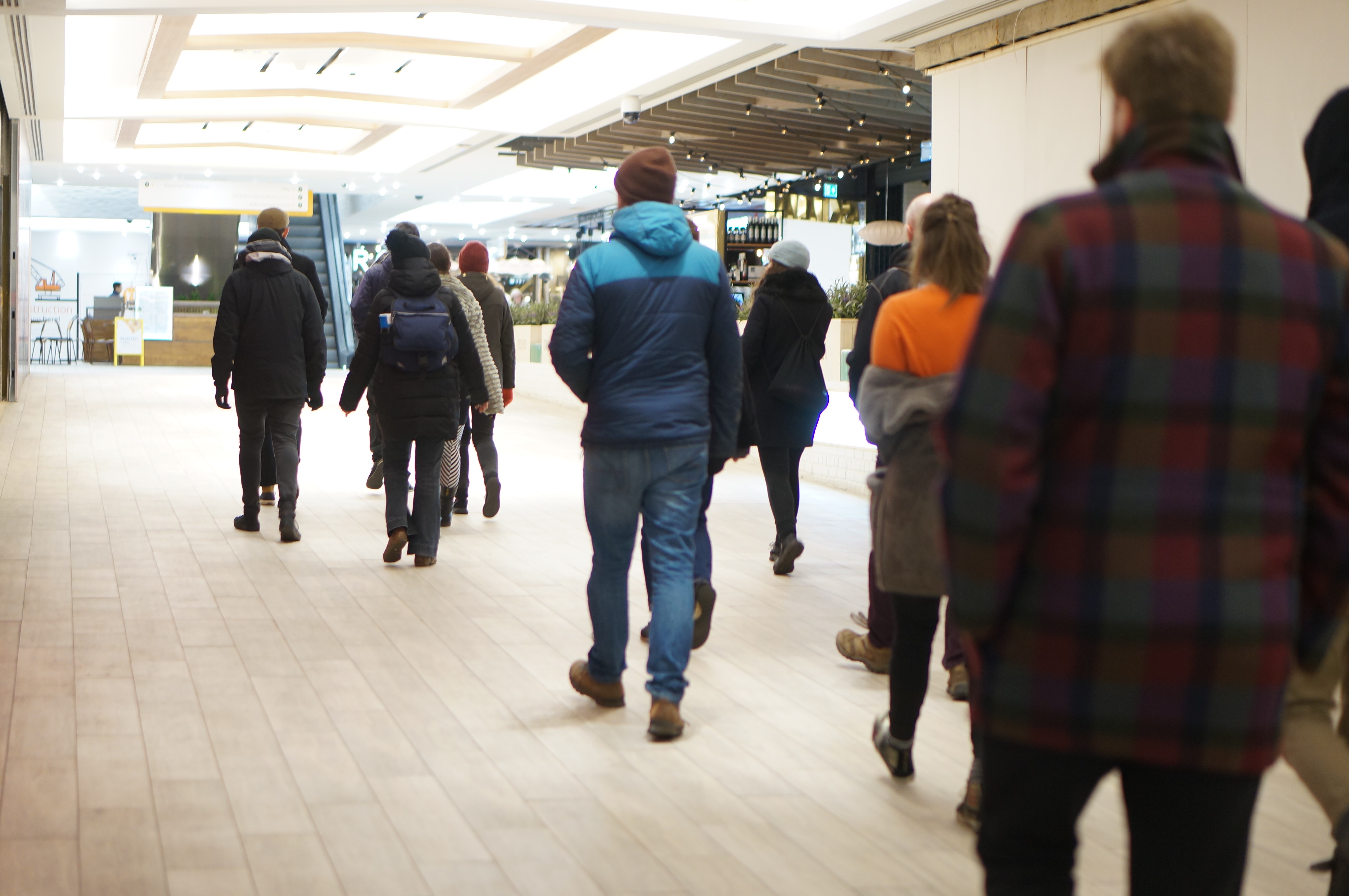
‘Returning the ear’ is a collaboration between Tim Shaw and Jacek Smolicki. Through sound walking and field recording, Tim and Jacek constructed a performance walk in response to the soundscape of Newcastle city centre. On Saturday 4th February 2017 audiences joined them on two sound walks at 10AM and 8PM. The walks comprised of 30-45 minutes of listening in silence concluding with a performance college of collected material presented in the Northen Charter project space.
Tim Shaw has worked internationally as an artist, performer, sound designer and researcher. His practice is situated within media art and draws upon soundscape and electroacoustic composition, performance making and DIY technology. Collaboration plays a central role in his approach, he has been lucky enough to make artistic work with Chris Watson, John Bowers and Sébastien Piquemal. Shaw has presented work in various venues worldwide including ARC, Switzerland (2016), Stereolux, France (2016), APO33, France (2016), Eastern Bloc, Canada (2016) and The Wired Lab, Australia (2016) and works as a lecturer in Digital Media at Newcastle University.
Jacek Smolicki is a cross-media artist and designer with degrees in Methodology of Design, Interdisciplinary Studies/Experience Design and Sound Art currently enrolled in a PhD research at the Malmö University. Since 2008 he has been conducting a life-long initiative based on documenting his presence in public spaces by the means of consistently performed practices deploying a range of multi-modal technologies and artistic techniques. On-Going Project includes for instance Minuting in which Smolicki records at least one minute of sound every day since August 2010.
Six Legs - Dr Vivek Nityananda; August 2016
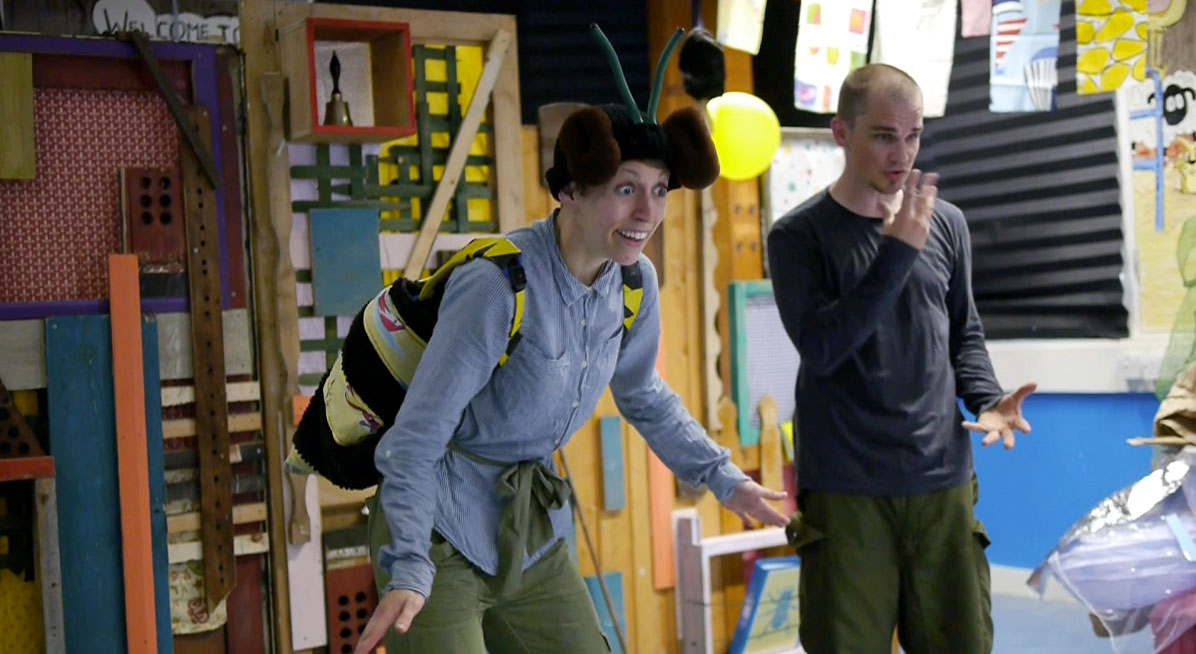
Project Leader: Dr Vivek Nityananda, Research Associate, Institute of Neuroscience
Dr Vivek Nityananda a sensory biologist at Newcastle University’s Institute of Neuroscience, in collaboration with Cap-a-Pie theatre company, co-created a new theatre piece Six Legs over August 2016. This included scripting, rehearsals and a run of 15 shows at Ouseburn Farm, an urban community farm in Byker/Ouseburn, Newcastle.
The show posed, to the young audience, the question: ‘How are insects similar or different to me?’ The structure and content of the show aimed to develop deep learning about this central question. Six Legs immersed the audience into a self-created environment to interact with performers simultaneously as audience and co-participants. The performance encouraged the audience to observe and understand how organisms sense the world. The show engaged 240 people including families and young children from the local area in thinking and learning about insects within an imaginary world. The previous summer Dr Nityananda and Cap-a-Pie had worked with 448 people including families and school children to begin creating the show.
One audience member commented that she saw a lot of children’s theatre with her children and Six Legs ability to draw the children into the world of the show alongside the performers was particularly exciting. Written feedback from families included
• “Ingenious use of everyday objects”
• “Brilliant show, fantastic acting, very imaginative.”
• “Wonderful narrative. LOVED IT!”
• “The composition, the actors, the presentation, the wit. It was truly amazing.”
In discussions after the show the children could articulate insect behaviour that they had seen in the show and compare it with how they acted. One performer commented that each section of the show was like a new game that he and the children were playing together, consciously invested in the imaginary world.
This project was supported by the Institute and EngageFMS, the Faculty of Medical Sciences Engagement team.
Academic Waste - Helena Lacey; March 2017
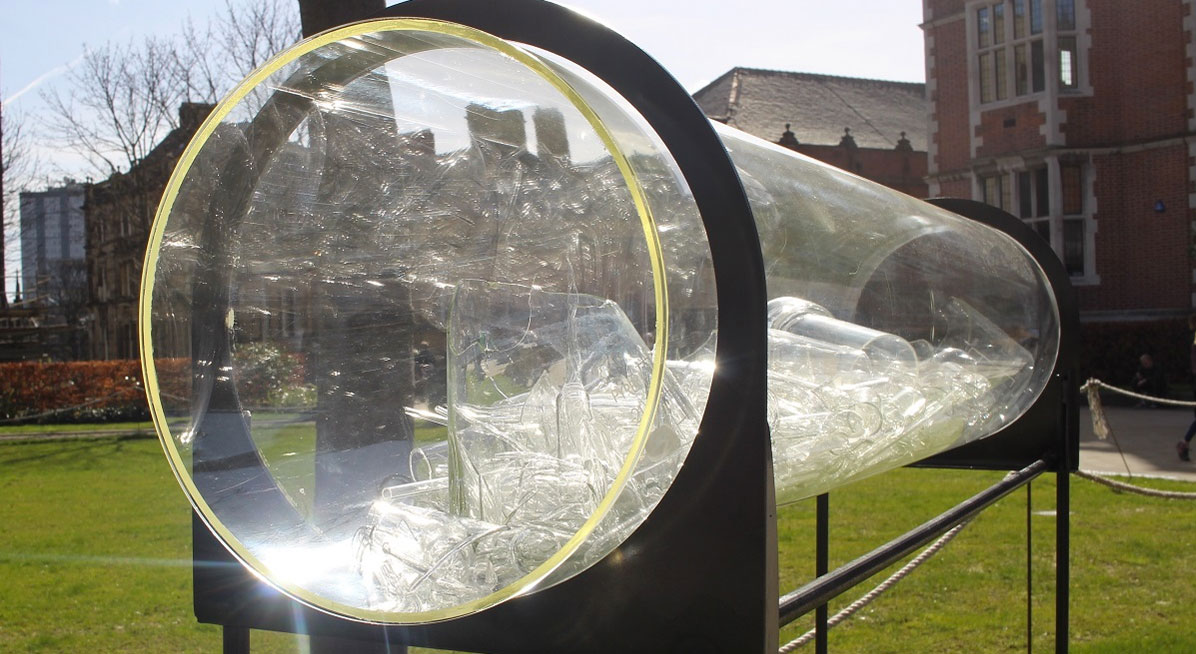
Project Leader: Helena Lacey, UG Student, BA Hons Fine Art, School of Arts and Cultures
Academic Waste is a cross-collaboration visual arts installation that engages with recycling and decomposition as a sustainable and educational process. On Newcastle University campus, three Perspex cylinders showcase the waste output from three academic departments – Engineering, Chemistry and English. The waste output will focus on the recyclable materials metal, glass and paper, representative of the academic departments. It is essential that these materials are recycled correctly in order to strive for a sustainable campus and Academic Waste aims to provide an alternative way for staff and students to understand the necessity of recycling sustainably.
Visualising the Patient Experience - Prof Julia Newton
Project Leader: Julia Newton, Clinical Professor of Ageing & Medicine, Institute of Cellular Medicine
Dr Juliet Chenery-Robson was recently awarded her practice-led PhD from the University of Sunderland for a project entitled Portrait of an Invisible Illness. Her PhD explored a range of strategies for visualising ME with the aim of raising awareness and developing understanding particularly at the patient/clinician interface. The body of work produced was showcased in an international group exhibition at the National Museum of Singapore and a solo show at the Royal Photographic Society in autumn 2016.
Building on this body of work, funding was awarded by EngageFMS, in partnership with the Institute, to enable Juliet to spend time working with colleagues in the Faculty of Medical Sciences (FMS) in order to develop new collaborations that will ultimately lead to the submission of an Early Career Researcher application.
The project seeks to embed practice-led research within broader programmes of activity in FMS, with the creative output becoming a point of reflection for clinicians and patients with the overall aim of both improving patient care and developing/reflecting on research. Creative methodologies also have the potential to encourage innovative and ‘other’ ways of thinking, and Juliet is interested in exploring the ways in which her practice might influence medical science methodologies, particularly around patient engagement.
For her current application to the Leverhulme Trust for ECR funding, Juliet has linked with social gerontologists, clinicians and medical researchers to explore issues associated with ageing, chronic illness, and multi-morbidity as part of a potential project centred around the spaces in which we age.
The Act Of Seeing - Syahriar Tri Rizaldi
Project Leader: Syahriar (Riar) Tri Rizaldi, PG Student, MA Creative Arts Practice, School of Arts and Cultures
This project explores the potential relationship between eye movements and improvised audio-visual by creating a performance piece where the data from the performer’s eyes movement will be generated into motion images & sound using a technique of measuring electrical potential and software. Moving images will be projected into the performer’s body: the lights from the moving images will affect the eyes’ movement and create a feedback loop reaction between eyes and motion images. This project not only offers an alternative way of presenting audio-visual performances, it also contributes to an ongoing, vital, public discussion about the relationship between the body and technology.
The Act of Seeing has been presented in several performance events and talk after it was premiered at Culture Lab in August 2016. In September 2016, The Act of Seeing is featured on The Creators Project. Throughout September to October 2017, Riar has been researching on creating a visual that has more impact to eyes movement. In November 2016, The Act of Seeing was invited to KLEX – Kuala Lumpur Experimental Film and Music Festival to take part in its Music & Audio-visual Performance event (http://www.klexfilmfest.com/music-audio-visual-performance/), at this event Riar presented the new form of The Act of Seeing – slightly different than previous performance https://vimeo.com/180330531 . Two days before KLEX, Riar was invited to the School of Creative Media, City University of Hong Kong to give a talk about The Act of Seeing and my other works https://sm2703.wordpress.com/2016/11/11/guest-talk-riar-rizaldi/. In early 2017, Riar was invited to perform The Act of Seeing at dotolim concert series in Seoul, South Korea https://www.youtube.com/watch?v=ZuZFUe2m3Dw
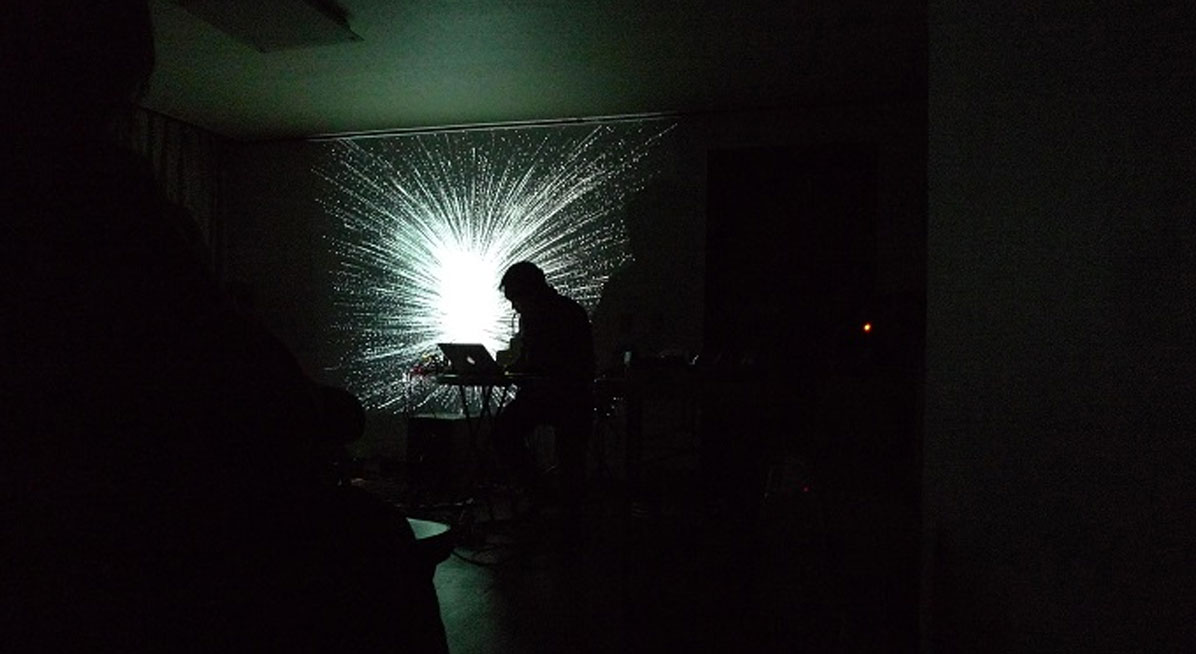
What Culture Do We Need? - Dr Fruela Fernandez
Project Leader: Fruela Fernandez, Lecturer in Spanish Translation, School of Modern Languages
Since the start of the current economic and social crisis, Spanish arts are experiencing a vibrant period with the emergence of new artists, spaces, and practices that aim at contributing to the transformation of the country. To analyse past achievements and future prospects, a public debate was organised in Madrid with three creative practitioners and activists, in which key issues for post-crisis culture (i.e. job insecurity, politics, new media, etc.) were discussed. The debate was held at a cooperative bookshop to enhance interaction with the audience. the event was videoed for online dissemination.
This Institute funded event took place on October 6th 2016 at the cultural centre “La Casa Encendida” http://www.lacasaencendida.es/ in Madrid. The venue was full, with an estimated attendance of 120 people. During the event, Dr Fernández —who works on the relationship between politics and culture after the ‘indignados’ mass protests of 2011— engaged in an open debate with three practitioners: Silvia Nanclares (cultural activist and writer), Pablo Und Destruktion (musician and actor), and César Rendueles (sociologist and writer). Their discussion focused on the development of Spanish culture in the current period of economic and social crisis, covering issues such as the relationship between culture and political change, the emergence of new cultural spaces, the importance of institutions, and labour conditions for artists. Conversation was rich and vivid, with plenty of questions from the audience. The event was recorded and made available on Vimeo
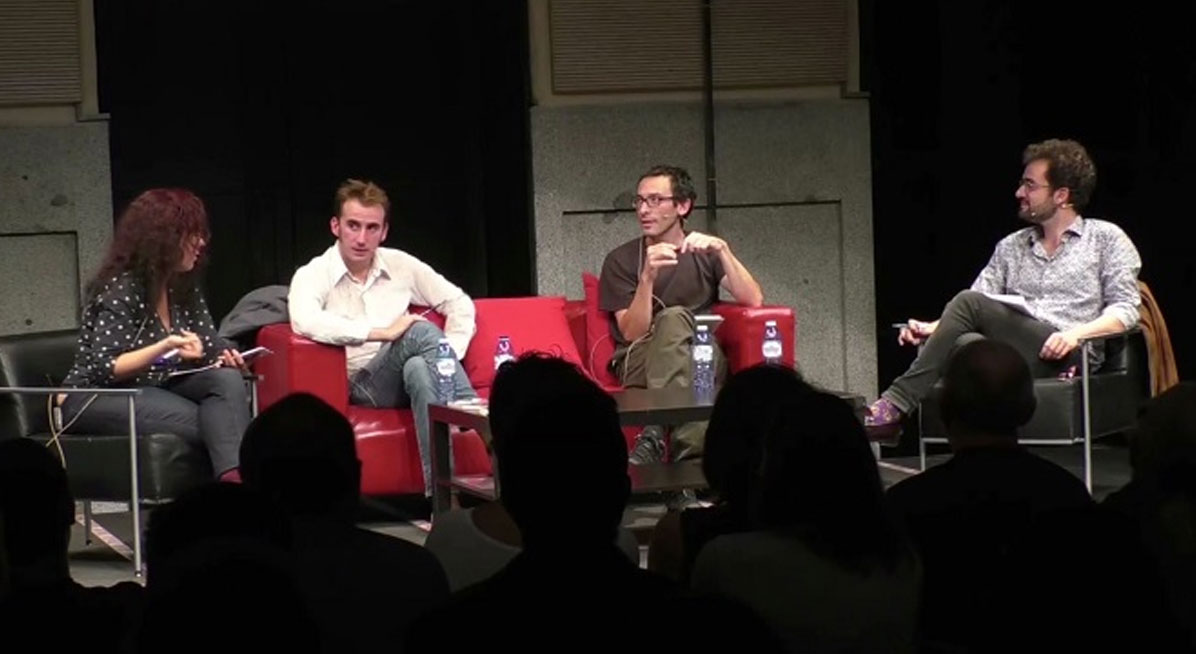
Rāgas Online - Prof David Clarke
Project Leader: David Clarke, Professor of Music, School of Arts & Cultures
This project is producing materials for a website for Indian music that will function as an open access research tool and pedagogical resource, with the potential to create impact and lever external funding. The site will curate recordings of exemplary performances of Indian vocal rāgas (a principal form of Indian music) by Vijay Rajput, with interactive commentary, transcriptions and translations produced collaboratively by David Clarke, Dr Rajput and others. This will make a valuable corpus of material freely available online to researchers, performers and students of Indian music, and to a wider lay public.
Since July 2016, a number of meetings have taken place with Dr Vijay Rajput, RA for the project At these we have:
- Gathered information from source texts for all 13 ragas to presented on the eventual website
- Begun writing scholarly commentaries for each raga, based on the above.
- Electronically transcribed the song texts for all 13 recordings into Devanagari (Hindi) script
- Transliterated these into Roman script using ISO 15919 (international standard for transliteration of Indic scripts)
- Begun making musical transcriptions of the songs using Indian sargam notation.
Dr Jonathan Katz (All Souls College, Oxford University) has agreed to act as general language consultant for the project, and has worked on the translation of the texts of the songs. We held a meeting in Oxford about the translations in February 2017.
Inevitably, some of the challenges of the project have only become fully evident once under way. Not the least of these is the complexity of translating the texts, which are in an obscure dialect of Hindi, known as Braj Basha, and have required the seconding of Dr Imre Bhanga (an Oxford University colleague of Dr Katz and a Braj specialist). But it’s been fascinating to pursue this, and the process has been extremely valuable to my own development as a researcher of Indian music.
As the project progresses selected materials have been posted internally here at the University on the Blackboard site for MUS2045 (Indian Music in practice) for use by students this academic year.
Silent Landscapes - Usue Ruiz Arana
Project Leader: Usue Ruiz Arana, PhD student, School of Architecture, Planning and Landscape
This project investigates our relationship with nature in our most relaxed state, in silence. Silence is approached as a state where the reduction of sensory overload embraces us in our solitude. I turn to the mapped tranquillity of Northumberland National Park in an attempt to find it. I proposed a phenomenological journey through the tranquil areas of the park to find silence, and a sculptural intervention with which to question the validity of the definition of tranquillity. This project forms part of a creative practice PhD in landscape architecture that embraces other disciplines including sound art and digital media.
During the autumn months (September to December 2016) I walked through a number of sites within the mapped tranquillity areas of Northumberland National Park, to identify the place/places where I felt most in silence. These walks were planned following a desktop review of the National Park (to include a variety of habitats and landscape features), an in depth review of the Mapping Tranquillity reports and methodology, and in consultation with the Northumberland National Park Authority (NNPA). The walks allowed me to test the ideas of silence as I was reviewing them in the academic literature, and developing my own ontology of silence in the landscape. I recorded the main walks acoustically, visually, and through descriptive narrative, with a view to produce a booklet of the walks on completion of the project.
Following this phenomenological journey through the Park I selected three potential sites to carry out the installation of the sound amplification structure in May 2017, investigate changes of that tranquillity in time, and test my concept of silence. I have developed a model for the sound amplification structure, following a review of historical and current passive sound amplification devices, and after testing different options. A booklet with images of the model of the structure and visualisation of the structure on the three potential sites can be found here
This booklet was presented to colleagues at NNPA in March 2017 to discuss the suitability of the sites and permits necessary to carry out the installation. As most of the Park is privately owned, landowners will now be approached through the NNPA for their consent. During April 2017, I will also look at alternative sites as a backup plan, should consent be declined, for the currently proposed ones. The installation of the structure within the park in May 2017, will be followed by a gallery exhibition that will represent the experience indoors. This gallery exhibition will take place somewhere at Newcastle University in autumn 2017, and later on at the soon to be completed Sill Landscape Discovery Centre
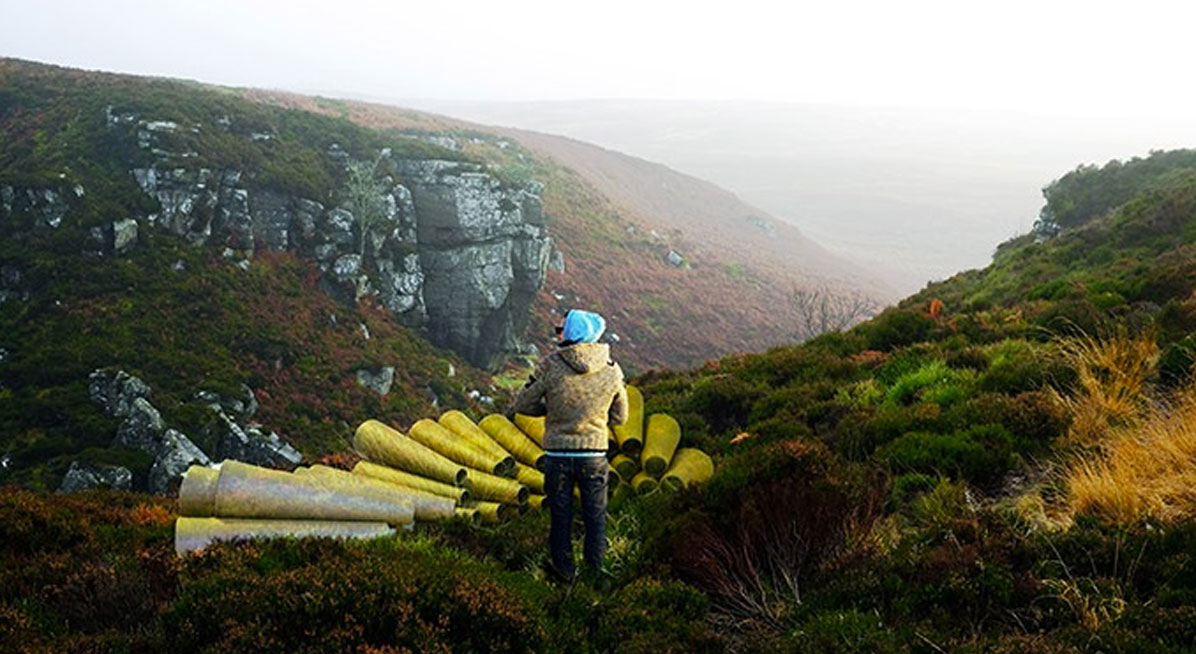
Rules of Engagement - Dr Cecilia Stenbom
Project Leader: Cecilia Stenbom, PhD Student, Fine Art/Art History, School of Arts and Cultures
Rules of Engagement consists of three filmic vignettes and is part of Cecilia Stenbom’s practice led research into the relationship between moving image and commodity culture, exploring the blurred line between the everyday and screen-based fiction. The starting point for the work is a set of narratives extracted from recorded conversations about the expectation to act according to set, but often-invisible social protocols. Rules of Engagement re-imagines the environments and characters from the original accounts, mixing the feel of documentary re-enactment formatted somewhere in between a cinematic chamber piece and televisual drama. The vignettes will be filmed on dressed locations; re-interpreting lived experienced on screen in fictional spaces.
In December 2016 Cecilia Stenbom secured additional production funding for the project from Arts Council England through Grants for the Arts Scheme. The additional funding allowed the project to step up in ambition and length of filming from 3 days originally planned to 6 days.
The design team, includes production Designer Mike Mcloughlin, Art Director, Kim Carr and Costume supervisor, Laura-Jane Aitman.
The filming took place in February 2017 and Cecilia is currently in the early process of editing together the material. As an exciting development she has now secured 5 screenings of the work at venues across the UK including CCA (Glasgow), Regent Street Cinema (London), Tyneside Cinema (Newcastle), The Tetley (Leeds) and Berwick Film & Media Arts Festival. These screenings will happen early in 2018.
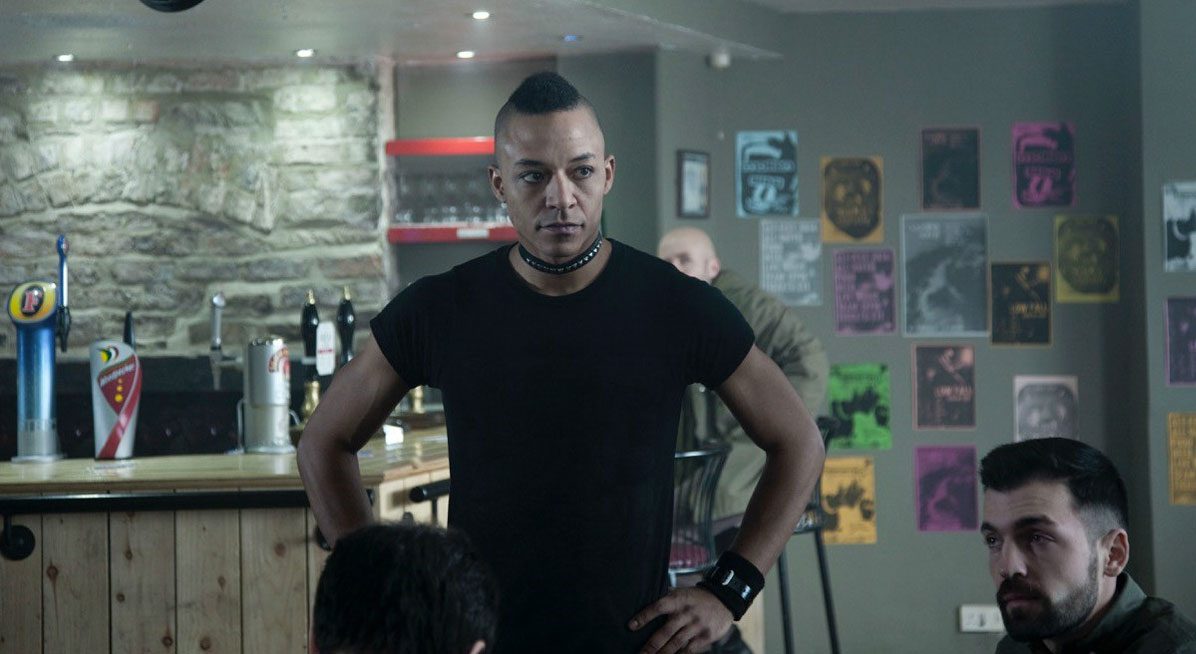
Interdisciplinary exchange in technical process of photo lithography - Dr Enrique Escobedo-Cousin
Project Leader: Dr Enrique Escobedo-Cousin, Research Associate, Institute of Neuroscience/School of Electrical & Electronic Engineering
This project aims to explore the unlikely relationship of two entirely different disciplines: fine art printmaking as a means to social communication, and semiconductor micro-fabrication applied to neuroscience. Photo-lithography and etching processes are routinely used in both areas. The objective of this collaboration is to produce a collection of macro and micro-scale images to be exhibited, to share conceptual approaches and to exchange technical processes.
The production of macro-artwork production is complete now. A collection of ten large-scale images of microscopic biomedical devices have been produced.
The micro-artwork is nearly finalised now. Artwork was provided which was digitised in the form of files normally used for micro-chip design. This allowed us to print miniature versions of the designs using materials normally used in micro-electronic fabrication. The “micro-artwork” picture shows an example of one of the images printed in gold and titanium. The size of the image is about 1 millimeter.
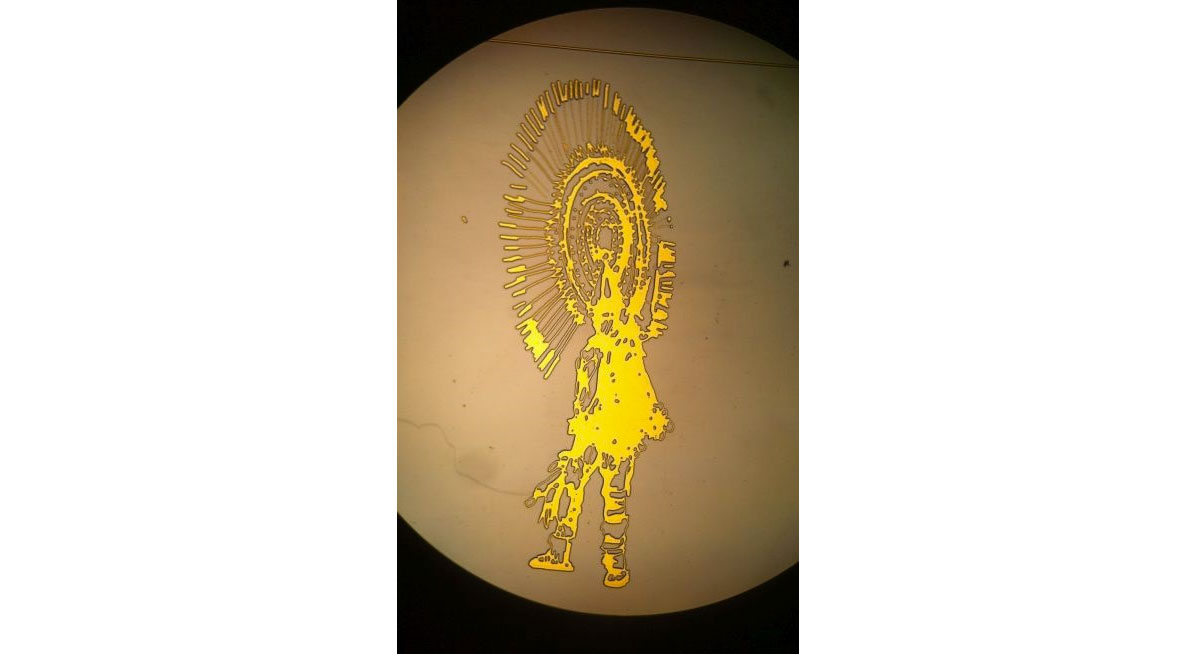
Brainbows and Bodies - Dr Christy Ducker
Dr Christy Ducker on the initial stage of her fellowship at Newcastle University’s Institute for Creative Arts Practice.
I recently encountered this photograph of a ‘Brainbow’ which illustrates thought in action. It shows the architecture of a brain at work (each nerve cell has been labelled with fluorescent colour). It also looks very much how my research fellowship has felt so far: busy, colourful, and connective.
At the Institute for Creative Arts Practice, I’m exploring the theme of regeneration, and working to bring arts, medical science and education together. In these initial months, I’ve been privileged to spend creative time in multiple intellectual environments and cultures. For me, this is an immensely productive way to work. Fortunately, it’s also an approach the Institute supports with real gusto and nous. Because of this, I’ve felt encouraged and supported to cross boundaries in pursuit of new poems. Amongst other lines of enquiry, I’ve written in response to: lungs being regenerated for transplant at the Freeman Hospital; discussions of creative practice as research with Newcastle’s PhD practitioners; and my encounter with the Pybus Archive of medical books at the Robinson Library. The Pybus Archive is where I’ve met 15th century books of ‘Magick’, soldiers’ medical records from 1914.
These first months have seeded a number of projects which will grow throughout my three-year tenure. In particular, I’ll explore the links between transplantation, print-making and metaphor. I’ll also engage further with the 80 metres of material in the Pybus Archive. In response, I’ll generate new poetry and workshops about medicine, bodies, and the politics of flesh.
Like a Brainbow, my fellowship has been lit up by inter-connections with other schools of thought at the University. I’m intrigued by the work of Newcastle University Institute for Social Renewal, for example, exploring the potential impact of Brexit on social regeneration and health. I’m keen to pursue this link, and investigate my key theme ‘slant-wise’.
There’s a lot that I’m excited about with this work. It’s a great opportunity to develop the dialogue between art and science, building on my recent residency for Wellcome at York’s Centre for Immunology and Infection. That work led to a collaboration with artist Kate Sweeney, and also Messenger,my latest book. Messenger unites the poetry and science of healing. I look forward to expanding on the book’s concerns as my research progresses. I’m also anticipating a lot more ‘Brainbows’!
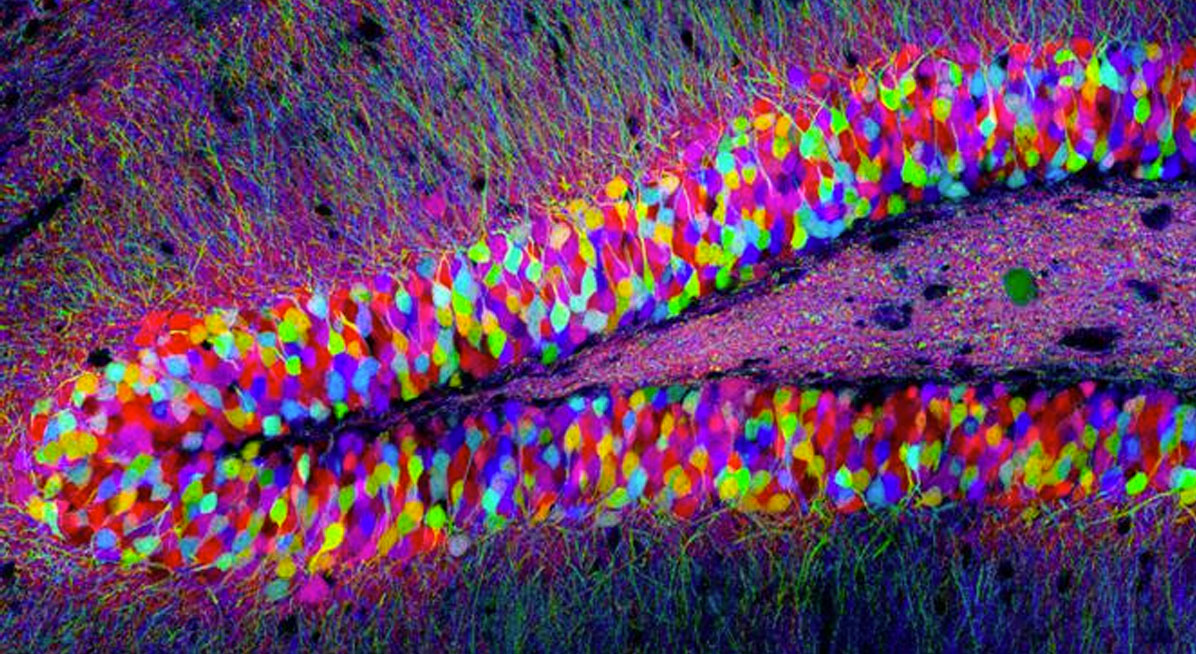
Collaboration between Berwick Visual Arts and Newcastle University’s Centre for Rural Economy - Dr Menelaos Gkartzios
For the last 5 years we have been running a unique venture, a collaboration between Berwick Visual Arts and Newcastle University’s Centre for Rural Economy. Advertised internationally every year and offered for a period of 6 months, we invite artists to come, live and immerse themselves in the town of Berwick-upon-Tweed, to produce original work under a broadly defined ‘rural’ theme. Academics at the Centre for Rural Economy are interested to look at the engaged and somewhat experimental qualities of art in keeping with their research explorations of rural communities. Artists are reflecting on a series of questions to produce artwork for further debate or understanding. Throughout the 5 year period, we have had incredible acceptance and participation from the local community. Our artists have explored different ways to work with the community of Berwick and, wider, Northumberland, while maintaining their artistic integrity.
For example Polish photographer and film maker Piotr Piasta (2014/15) interviewed older people and utilised archival material to create a series of short films that explore their memories, their skills and in parallel to this, the historic and contemporary functions of a border town. Under the theme ‘making homes, making rural’, Belgian sculptor and printmaker Sander Van Raemdonck (2015/2016) chose a contested case study for housing development and created a performative ‘guided tour’ exploring the participants’ opinions on redeveloping the site; he also produced a significant body of work consisting of sculptures and installations. Last year, English film maker and animator director Gemma Burditt (2016/17), presented a four meter long video installation telling the ‘the art of milk’ resulting from her interviews with dairy farmers in Northumberland as well as academics at Newcastle University. This year we are honoured to host Glasgow based artists G Â S T whose practice uses found photography and objects, sculpture, performance, print and time-based media, to survey folklore, myth and its curious relation to Northumberland.
Apart from the Arts Council and support from Newcastle University Institute for Creative Arts Practice, the residencies have also been co-funded by the University’s Institute for Sustainability and the Institute for Social Renewal. We have run seminars and workshops both at the University and in Berwick-upon-Tweed. The experiment has led in considering artist residencies as another scientific method of inquiry into community studies for future research projects. It also, once again, portrayed the potential of rural areas to explore their own culture and heritage on their terms. More importantly, it gave us visuals, sounds, materials and emotions from a town and region we now call home.
For more information please contact Menelaos Gkartzios
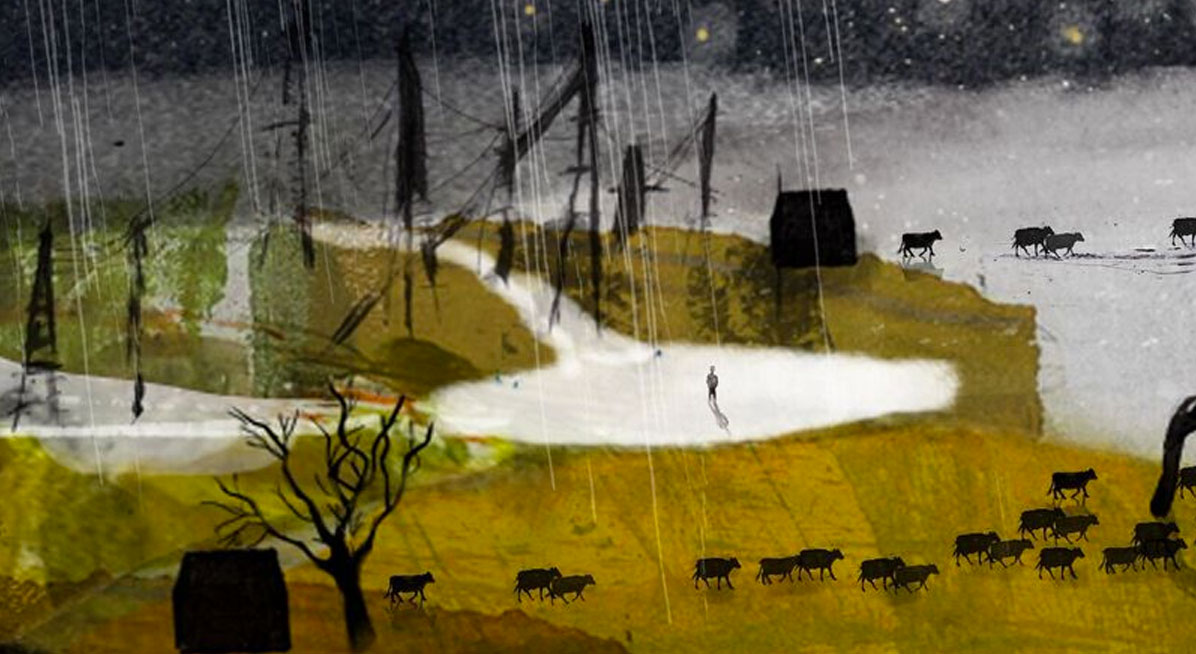
Plural Heritages of Istanbul community co-production - Prof Chris Whitehead
An AHRC / Newton funded project, Plural Heritages of Istanbul: the Case of the Land Walls, is exploring the potential of design research techniques to frame, develop and inspire community film co-production. The project is led by Prof Chris Whitehead with Dr Tom Schofield overseeing the design and co-production work (CI) and Dr Gonül Bozoglu and Dan Foster-Smith in roles as the project’s postdoctoral researchers.
The aims of the research are to locate and valorise plural heritage perspectives on the Theodosian ‘Land’ Walls of Istanbul. In essence to think in a more community-driven way about why the walls are heritage, what their stories are and who has a right to tell those stories.
Over the last months the project team has been working with local filmmakers and communities in Istanbul to create a series of 30 short films to be released later this year. The films will also form the basis of a mobile app placing them digitally within the city of Istanbul and allowing new kinds of spatial interactivity.
The films are also the product of innovative design activities led by Dr Schofield who co-convenes the Digital Cultures Research Group in Culture Lab. Here participants were given a set of open-ended creative tasks created to bring out personal and idiosyncratic perspectives from participants that relate aspects of their own interest in the walls and their history. For instance, in one activity, participants were provided with writing materials and asked to write a letter to addressed to a point on the walls of their choosing, asking the walls a question. Many participants used this as an opportunity to speculate on the veracity of historical accounts, to talk about their roots in the city and to make connections between justice and politics in both Byzantine and contemporary Istanbul.
The richness of responses to these activities encouraged the project team to adopt them as the basis for their upcoming co-production work. The new films will focus particularly on creative, speculative, sensory facets to the experience of the walls and their histories. In recognising the validity of such perspectives as a form of heritage making the project contributes to new scholarship on the role of creativity in thinking about places and the past. See the project website for updates.
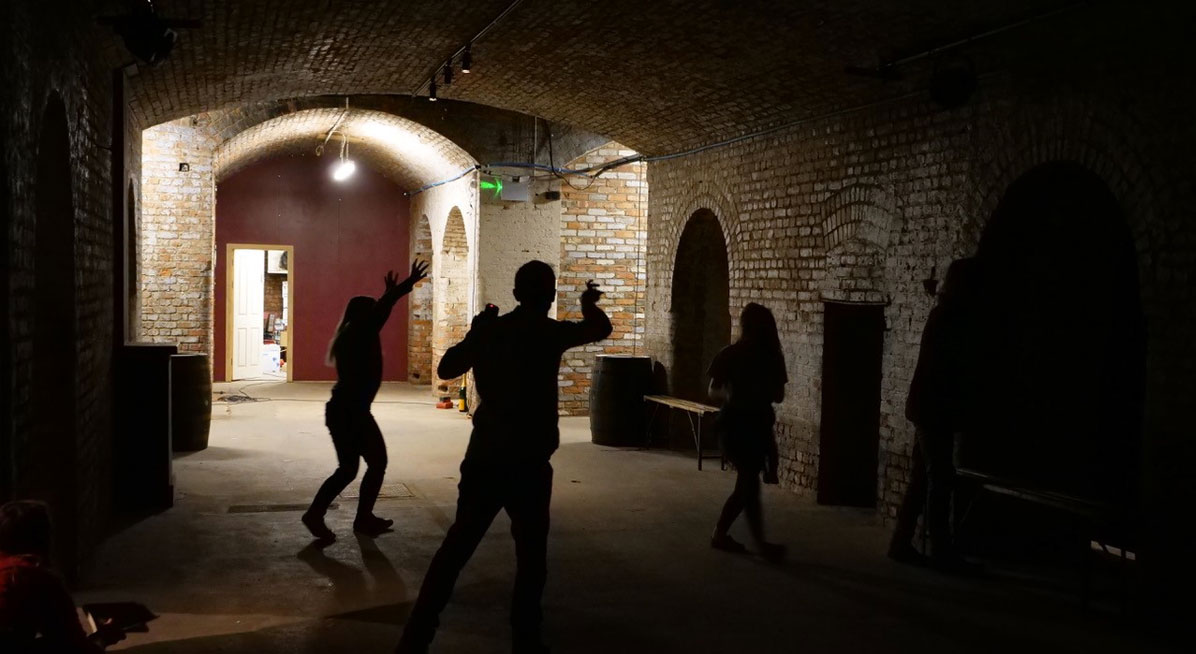
Art in the Countryside: In Praise of Japan - Dr Menelaos Gkartzios
What does art do ? And what happens if you take artistic practice outside the museum, the art gallery, the cultural quarter, the metropolis itself? I have been working on these questions for a couple of years now, mainly through the collaborative art residency that we run between the University’s Centre for Rural Economy and Berwick Visual Arts. This has offered a rich context to explore notions not only of engaged arts practice, but also of artistic research. A special section for the academic journal Sociologia Ruralis on ‘art in the country’ is forthcoming, edited along with Dr Julie Crawshaw (Northumbria University) and Dr Marie Mahon (National University of Ireland, Galway). There seems to be an increased interest in the rural social world in established art venues; for example the Whitechapel Gallery has been running an exciting session on ‘The Rural’, and Guggenheim has already announced the ‘Countryside: the Future of the World’ exhibition).
Meanwhile, in the far Far East, contemporary art is taking place in the countryside. Last year I was given the opportunity to do fieldwork in rural Japan as part of a visiting associate professorship post at the University of Tokyo. I came across a tradition of significant contemporary art festivals in the most remote and depopulated locations of rural Japan – many of them led by the Tokyo-based Art Front Gallery, following the vision of its director, Fram Kitagawa, who has received praise for his contributions in this field. It was fascinating to observe how some Japanese art professionals even dismissed the very idea of the art experience in museums and formal art spaces as ‘western’. Of course art is abundant in Japan – it’s a philosophy that enters the everyday: from arranging flowers, to serving tea; from separating the public and the private social spheres in performative ways, to writing Japanese syllables and Chinese ideograms.
The most prolific of these art festivals has been the Echigo Tsumari Art Trienalle taking place in a disadvantaged mountainous area, but my fieldwork took place at the very first edition of the Oku-Noto Trienalle, also organised by Art Front Gallery, which coincided with my 5 month stay. Fieldwork included an ethnographic diary while attending the festival and visiting the artworks via structured bus guided tours, as well as in-depth interviews with visitors, curators and other art professionals, local policy makers and local community groups involved in the art-making. I would have never been able to do this work, had it not been for my colleagues in Japan supporting this endeavour, and particularly Dr Hironori Yagi and his students. We were a group, so important in Japanese culture.
The festival was so successful that it was difficult to find accommodation, so we stayed in a Buddhist temple instead – think of it: tatami rooms, low lights, emptiness. There was art even there. As I am going through my field notes of the festival, I read numerous stories about re-using abandoned buildings important for the rural community. At a closed school we rang the bells loud; a closed bath house – central in Japan’s social life – was filled with foam and people again. Nature is never to be underestimated in Japan and that was also evidenced in the artworks – some of them were actually destroyed because of the typhoons. But nature was equally never glorified. Engaged artistic practice was abundant and residents talked with pride and strong emotions about being involved in the festival. And then there were the odd stories, the almost insignificant connections that the art festival made, that really mattered: getting lost and being looked after while cycling at night to view light installations; making friends.
I am extremely excited to say that this is only the beginning. We will explore further this adventure of art in the countryside across Japan and the UK. Our collaboration has just received funding from the newly announced ESRC-AHRC UK-Japan Social Sciences, Arts and Humanities Connections Grant. I am delighted to lead, with our University Dean of Culture and the Creative Arts, Professor Vee Pollock, a new research network with the University of Tokyo, Art Front Gallery and our established collaborators in the wider region, Berwick Visual Arts and Scotland’s Stove Network. The research network aims to explore the contribution and potential of contemporary art in support of sustainable rural development. Stay tuned and get out of the city.
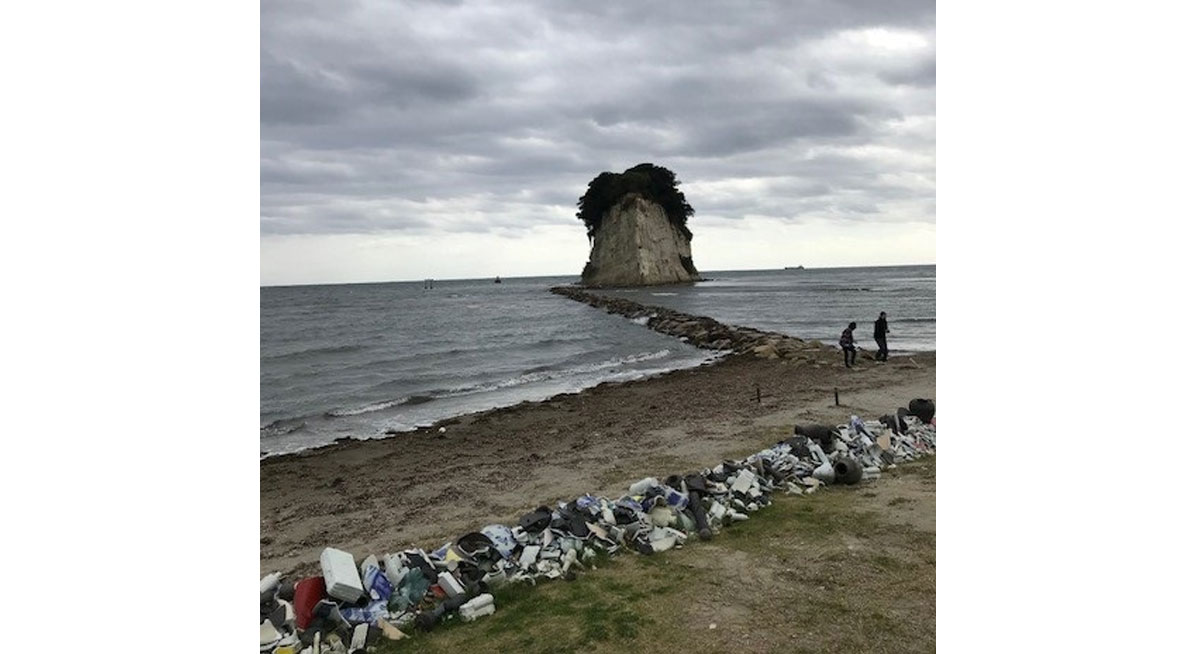
Polluted Leisure - Dr Clifton Evers & James Davoll
This project is a collaboration between Dr Clifton Evers and James Davoll. It addresses the question: how can we better understand and respond to assemblages of pollution and leisure? In the Anthropocene, many leisure enthusiasts think, feel, and act with the rhythms, flows, surges, and throbbing of pollution. The project uses a creative and participatory methodology.
The Polluted Leisure project has now established study sites in England, USA, Japan, Australia, China, and Scotland. Collaborations have been and are continuing to be undertaken with local and international artists, as well as institutions such as Wakayama University, Sydney University, and University of Oviedo. The project has been connected to the international Shadow Places Network, managed by Deakin University (Australia) and Linköping University (Sweden).
After a successful exhibition at the Ex-Libris Gallery Newcastle University, Clifton and James were invited to install a further show at the Foundation Maison des Sciences de L’Homme, Paris, France. At the latter site, Clifton and James also undertook a live improvised multi-media theatre performance of their research: Far from Heaven. This particular piece explores leisure through pollution, colonisation, race, and petro-chemical masculinity. A future exhibition is currently being arranged for South Africa, with Dr Glen Thompson at Stellenbosch University.
Clifton and James are currently transforming a polluted leisure site in North Tyneside as a creative place-making initiative. The initiative involves impacting local government policy. The work is being undertaken with North Tyneside Council and North Tyneside Art Studio, an award-winning organisation based in North Shields that has been using art and creative activities to transform the lives of people experiencing mental health issues.
Other outcomes include a peer-reviewed journal article introducing the new concept of ‘polluted leisure’, a book contract with Punctum Books (New York), and two short films that have been accepted into ethnographic and art film festivals (with one winning an award).
Clifton and James have presented their research at AnthropOcean, Imaginaires, Oceaniques, Paris VIII University, 2018; ASA18 Sociality, matter, and the imagination, and Association of Social Anthropologists, Oxford University (2018). Future talks are scheduled for The Leisure Studies Association conference, Abertay University; 7th Congress of the Portuguese Anthropological Association, Lisbon.
For further information see:
http://www.fmsh.fr/fr/diffusion-des-savoirs/29775
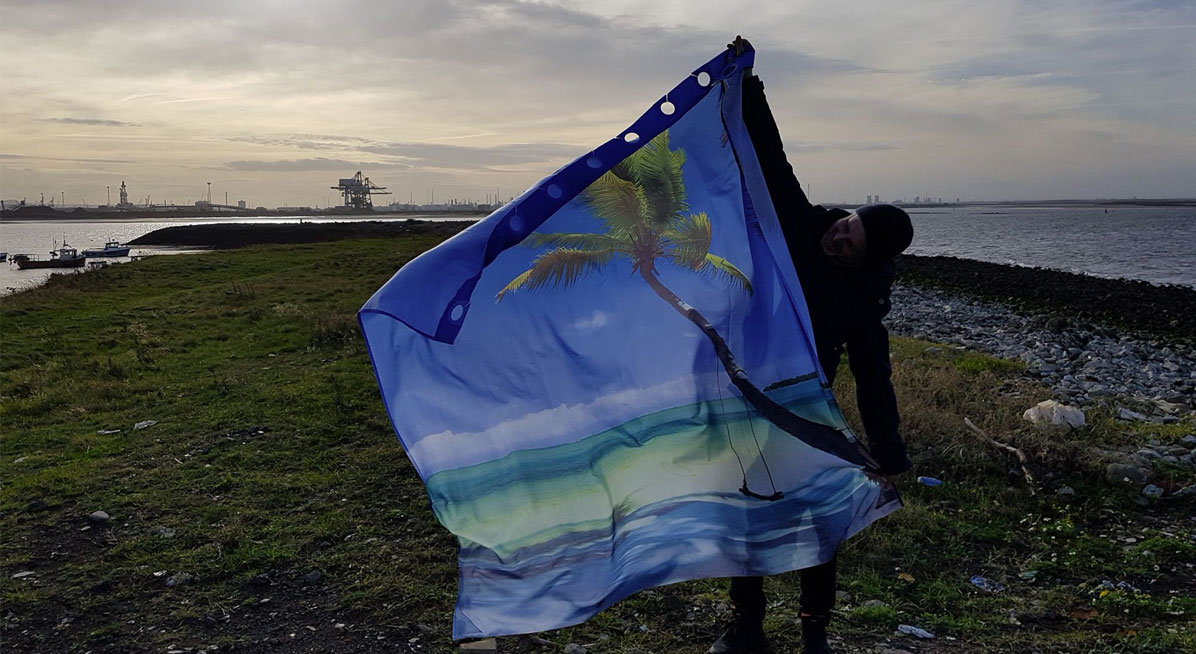
Finding a Voice: Poetry in Prison - Prof Sinéad Morrissey
As part of the FreedomCity2017 festival marking fifty years since Martin Luther King received an honorary doctorate from Newcastle University, the Newcastle Centre for the Literary Arts (NCLA), in partnership with Bloodaxe Books, published a landmark poetry anthology: The Mighty Stream: Poems in Celebration of Martin Luther King.The anthology spans both sides of the Atlantic and features poets predominantly from BAME backgrounds who are responding directly to the three themes of King’s 1967 acceptance speech: poverty, racism and war.
On the request of HMP Frankland two NCLA poets, Dr John Challis and Dr David Spittle, conducted a poetry workshop with prisoners in November 2017 using The Mighty Stream anthology. This session was highly successful – the participants were engaged and excited – and so a further session followed in February 2018 conducted by John Challis, David Spittle and NCLA Director, Sinéad Morrissey. Building on the success of both of these workshops, an application was made to the Newcastle Institute for Social Renewal (NISR) at Newcastle University to fund more workshops and to produce a final anthology of participants’ original poems and artwork.
Over the course of the following year, Sinéad Morrissey and John Challis visited HMP Frankland five times to conduct further workshops with participants. The main body of workshop attendees was drawn from HMP’s Creativity Class.
One of the key ideas which emerged over the course of the workshops was that of transformation: how experience gets transformed into poetry, and indeed, how texts (poems, paintings) can inspire new work and get “transformed” across genres. Participants were inspired to write in response to paintings, and to paint in response to poems; some participants produced art and poetry themselves which was in direct conversation. The final result – an anthology of 31 poems and 11 paintings entitled Hope on a Postcard after a poem by one of the participants – is testament to the enriching and generative environment which the workshops enabled within the prison.
The project involved the development of multiple core skills within the cohort, including literacy skills, written and oral communication skills, and textual editing skills. Further, and most importantly, the project improved the confidence, self-esteem, stress levels and general behaviour of the men involved. The success of the project evidenced the importance of creativity as a core part of any prison education programme and the transformative power of structured self-expression.
At the beginning of the project one man felt “very shy, anxious. I was going to just listen and not really be involved, but I was encouraged to have a go and try and enjoy poetry.” Through the course of the project this changed: “I feel really shy and awkward when it comes to reading aloud but they have made me feel warm and beautiful.” A frequent comment at the end of the project was “I have gained more confidence”; “I have had the opportunity to exercise skills I didn’t think I had”, or, as another participant put it, “the poetry part of my brain has opened.” Another participant commented:“[p]risoners are often looking for hope, recognition and meaning in a place where trust and the future seem out of reach. However, poetry and art generated a broadening of horizons and reflection.”
Professor Sinéad Morrissey
Director, NCLA
Co-Director, Newcastle Poetry Festival
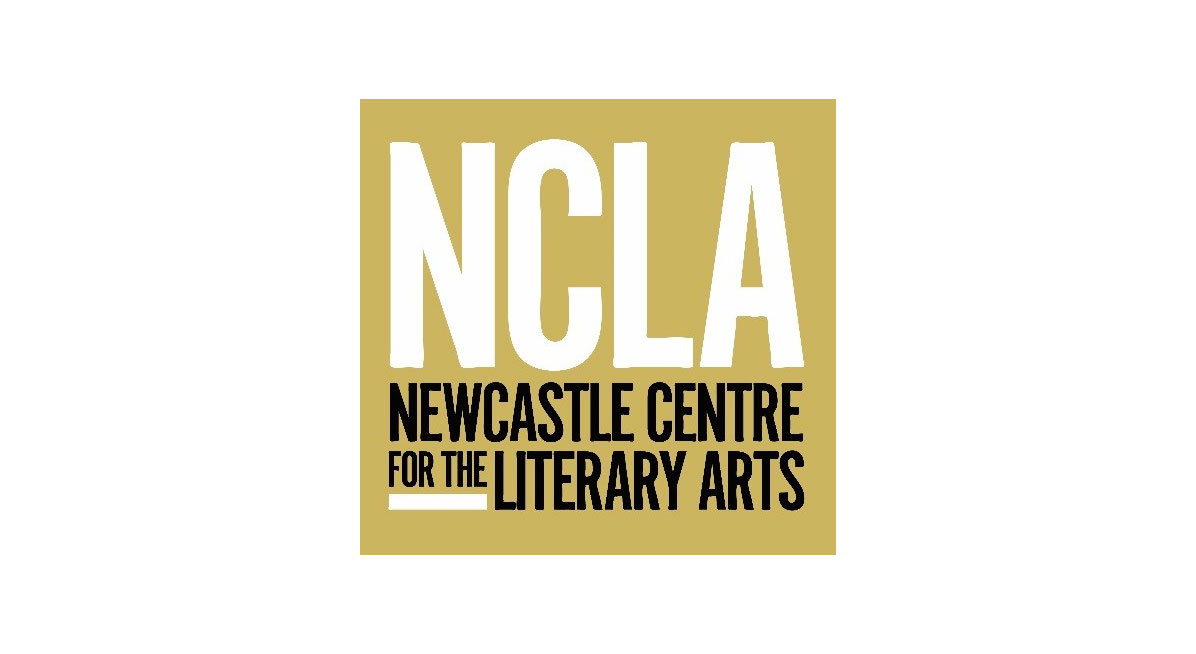
The Poetics of the Archive - Prof Linda Anderson
Creativity and Community Engagement with the Bloodaxe Archive. The archive of Bloodaxe books, acquired by Newcastle University, is one of the most exciting archives for contemporary poetry that exists.
The challenge was to unlock its meaning and use by seeing it as more than a scholarly resource, accessible through a standard search-based catalogue, and to allow more creative, open-ended and playful interactions with it. Funded by the Arts and Humanities Research Council.
Find out more about the project on the Bloodaxe Archive website.
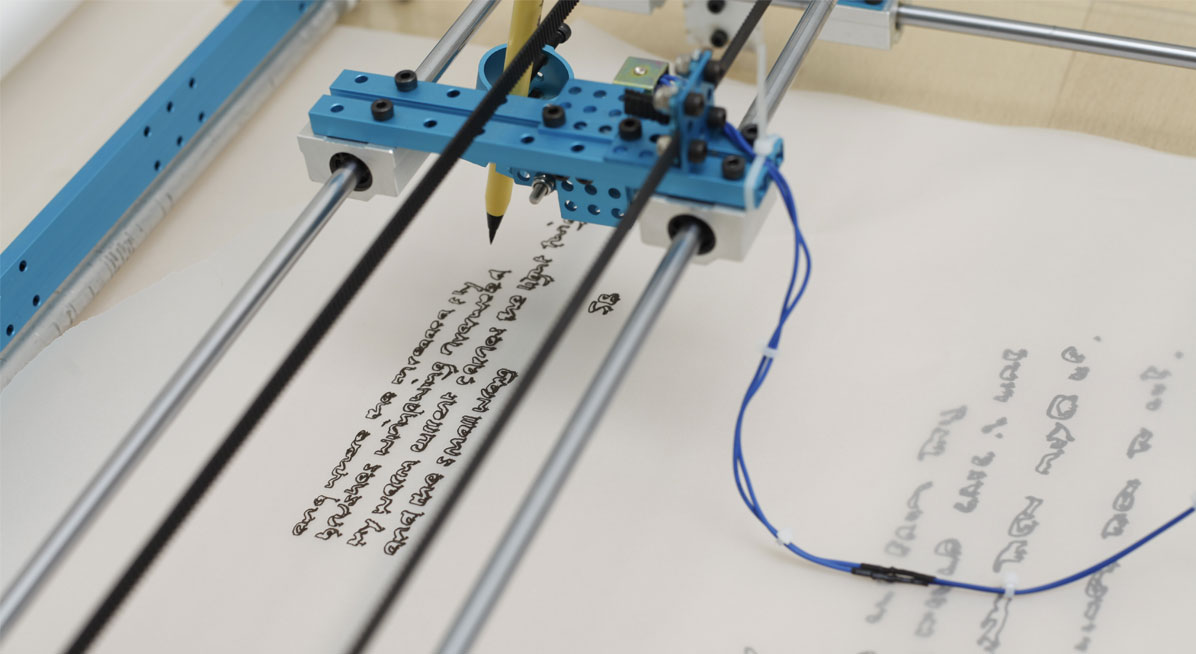
Digital Comics: Gertrude Bell Archive - Lydia Wysocki
This project identified key points in Gertrude Bell’s life and work, then created a series of short comics as entry points to a digital archive.
This multifaceted, dynamic digital biography provides direct and accessible links to contextualised historical sources. It supports and encourages children, young people, and adults to dig deeper into the digitised archive.
This project was led by Lydia Wysocki in collaboration with Applied Comics Etc.
Decoded 1914-1918
This was a two-week programme of AV installations and events that explored the First World War and its effect on those living in Tyne and Wear.
Seven artists from the University took inspiration from North East Museums collections. They created artworks and performances which examined and interpreted Tyne and Wear in the First World War.
The installations and performances explored a range of themes including:
- the role of women in the First World War economy
- Wartime communications technologies, particularly radio
- the impact of War on folk traditions in the region
- Armed Forces recruitment
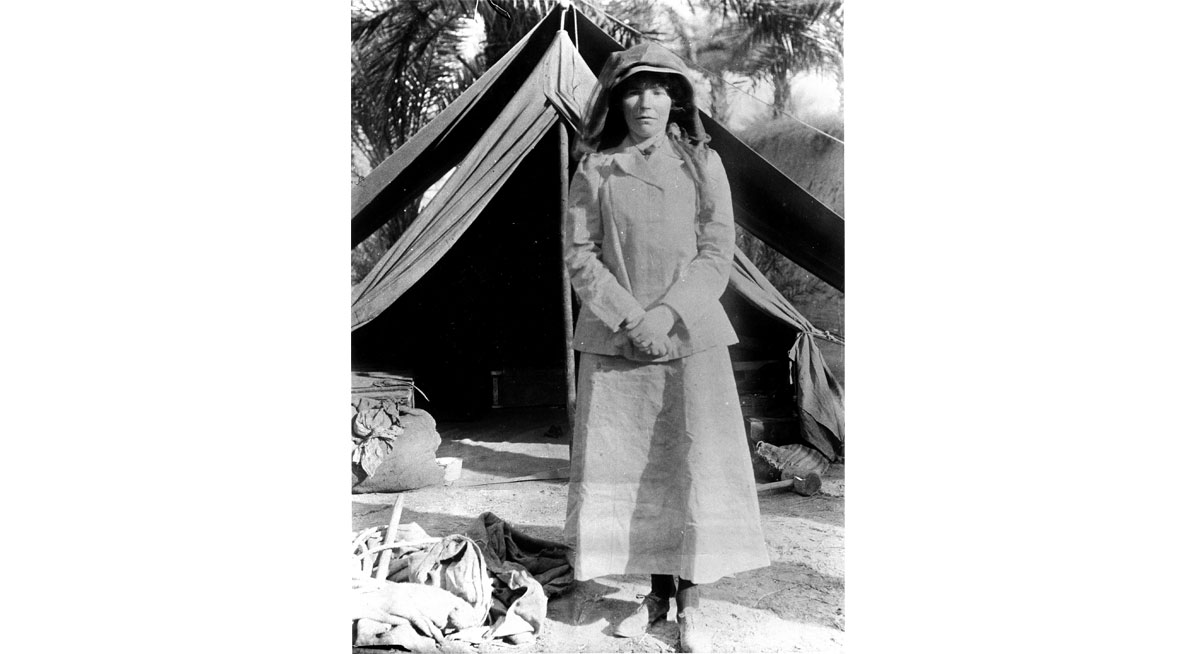
Decoded 1914-1918 - John Coburn
This was a two-week programme of AV installations and events that explored the First World War and its effect on those living in Tyne and Wear.
Seven artists from the University took inspiration from Tyne and Wear Archives and Museums collections. They created artworks and performances which examined and interpreted Tyne and Wear in the First World War.
The installations and performances explored a range of themes including:
- the role of women in the First World War economy
- Wartime communications technologies, particularly radio
- the impact of War on folk traditions in the region
- Armed Forces recruitment
Future Presence: Documentary Practices and Possibilities
This was a two day conference held at Newcastle University on 10-11 July 2015. It complemented the 'For Ever Amber' exhibition at the Laing Art Gallery.
We organised this conference with Amber Film and Photography Collective.
Speakers included participants from Newcastle University, Amber, Smoking Dogs Films, and Verso Images.
Watch the highlights of the event.
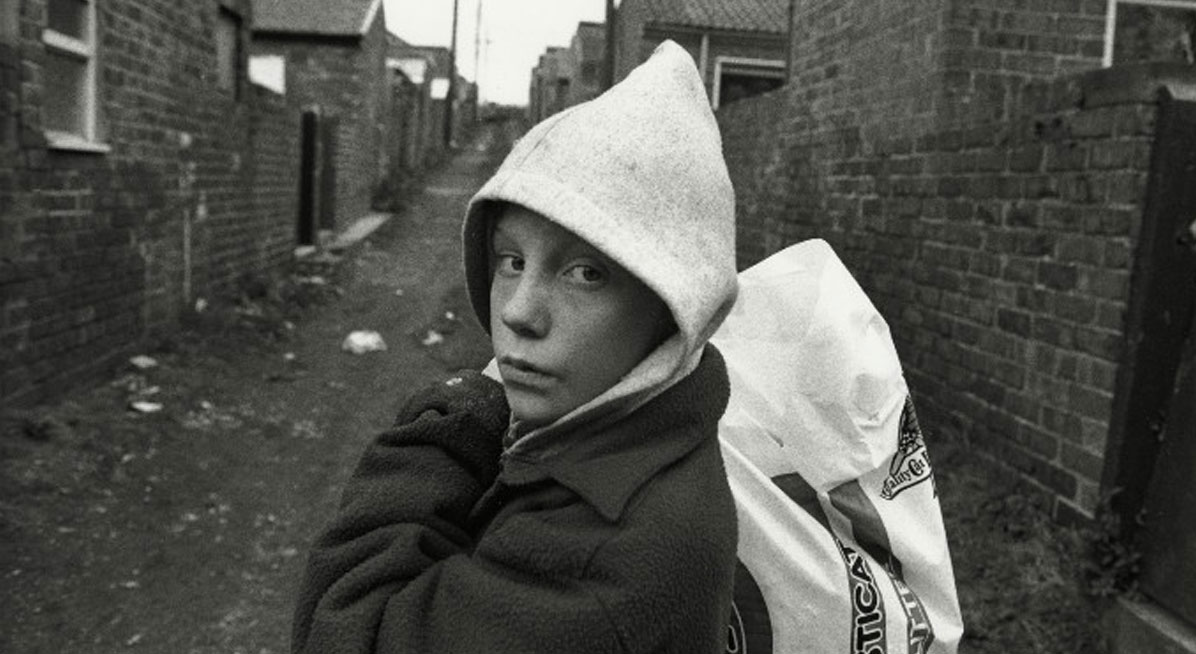
Digital Designs for Museum Dialogue[s] - Dr Areti Galani
This project explored the potential of creative, practice-based research to envision the ‘dialogic museum’. It produced a digital installation supporting new forms of conversation and learning for visitors.
It was designed in partnership with Destination Tyneside, a permanent gallery about migration in Tyneside in the Discovery Museum.
This project covered:
- digital media
- multimedia communication
- curatorial practice
The project was led by Dr Areti Galani.
Ladies of Midnight Blue: Movida Project - Hannabiell Sanders and Yilis Suriel, & Nikolas Barrera.
This project was a collaboration between three artists based in Newcastle: Hannabiell Sanders and Yilis Suriel (Ladies of Midnight Blue), and Nikolas Barrera.
It aimed to support the development of a multimedia music and visual performance which explores the relationship between live improvised traditional and non traditional:
- percussion
- mbira
- brass
- pre-recorded music and rhythms
- live sampling
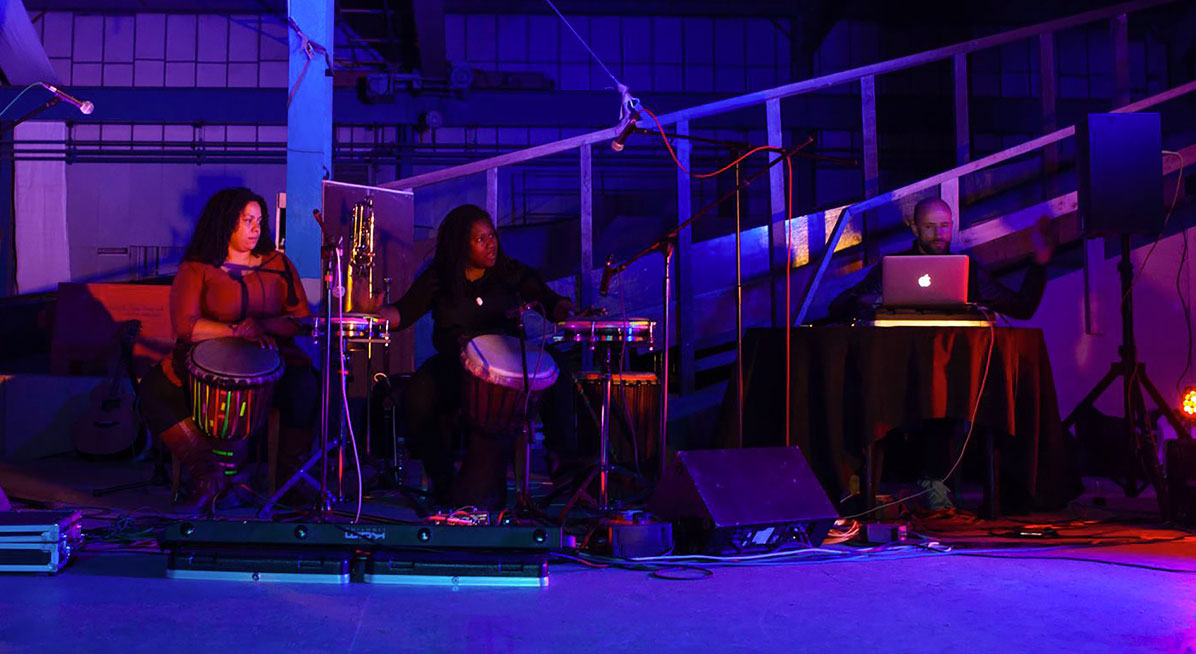
Letters for Learners - Dr Michael J Richardson
This project let academics at the University engage the community in research through creative arts practice. Researchers worked with theatre company Cap-a-Pie to write letters to members of the public.
The letters shared research and encouraged the reader to carry out a series of arts activities to creatively explore the academics' works.
The project was led by Dr Michael J Richardson. You can read a Times Higher Education article about Letters for Learners to find out more.
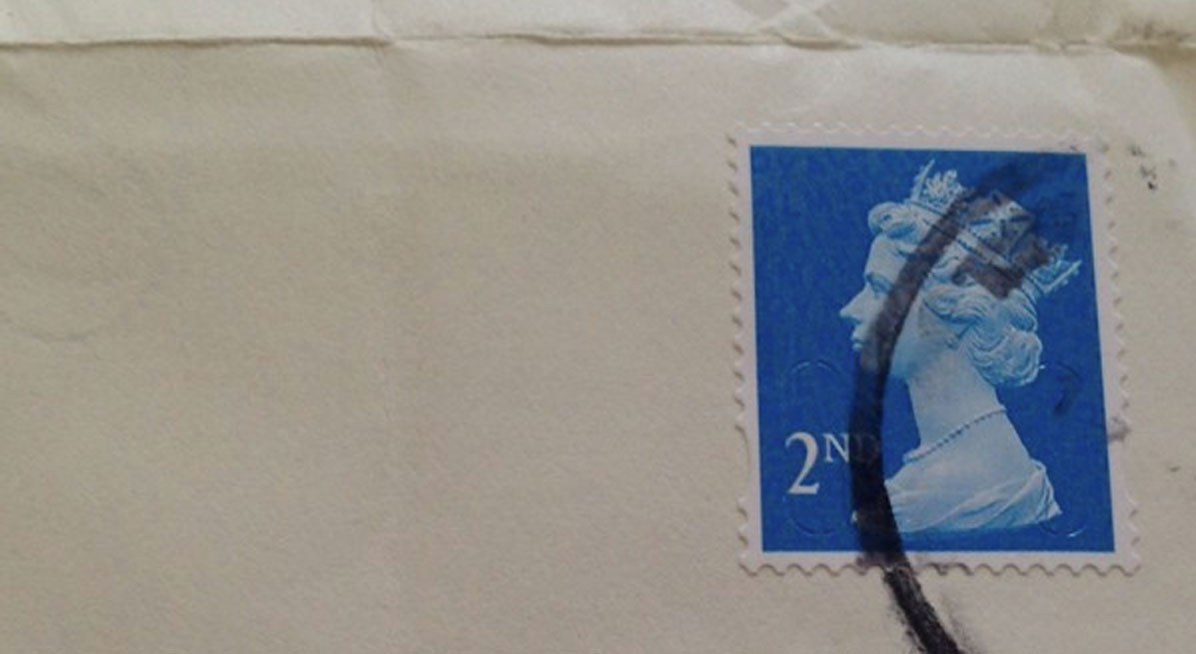
Ageing Creatively - Prof Eric Cross
This was a pilot study to explore the relation of creative arts interventions to wellbeing in later life. It was funded by the Medical Research Council.
Find out more on the Ageing Creatively website.
Co-curate North East
This aimed to create sustainable routes for North East communities to digitally transform and co-produce open cultural resources. Funded by the Arts and Humanities Research Council.
You can find out more about this project on the Co-curate website.
Co-curate North East - Prof Eric Cross
This aimed to create sustainable routes for North East communities to digitally transform and co-produce open cultural resources. Funded by the Arts and Humanities Research Council.
You can find out more about this project on the Co-curate website.
Northumbrian Exchanges - Prof Eric Cross
The aim was to assess and recognise the contribution of culture, particularly visual arts practice and music, to rural communities.
The University worked with a number of partners, including Allenheads Contemporary Arts, Visual Arts in Rural Communities and the Holy Island Partnership.
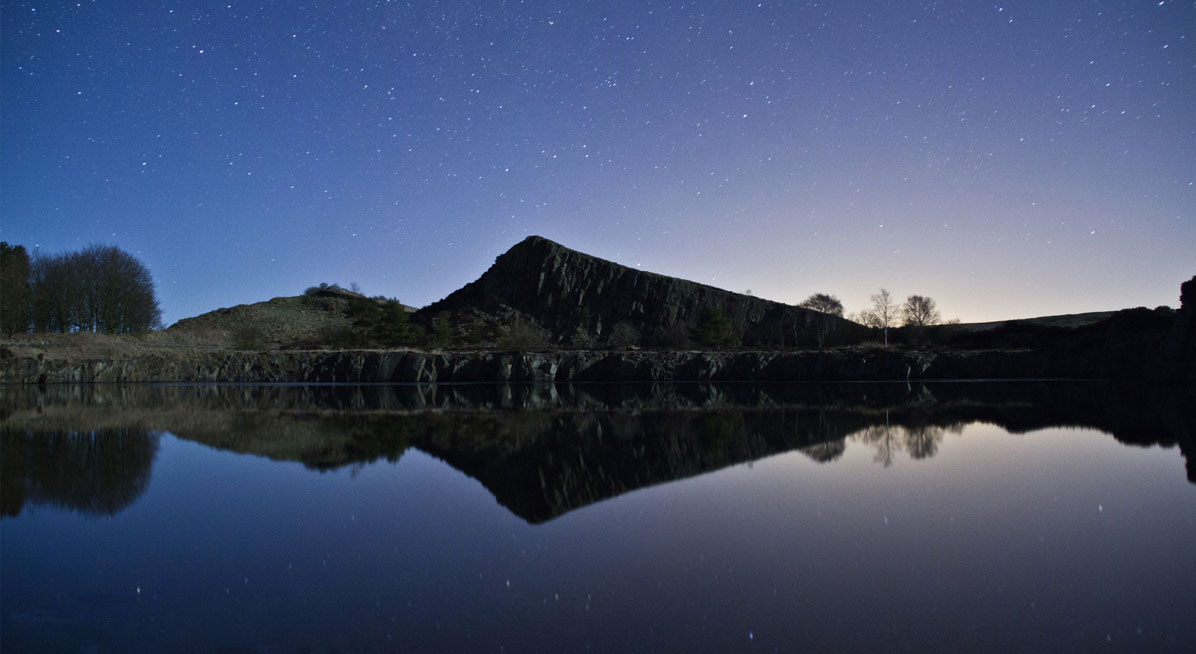
Made in Ethiopia - Dr Peter Kellett
Project lead Dr Peter Kellett, Senior Lecturer in Architecture
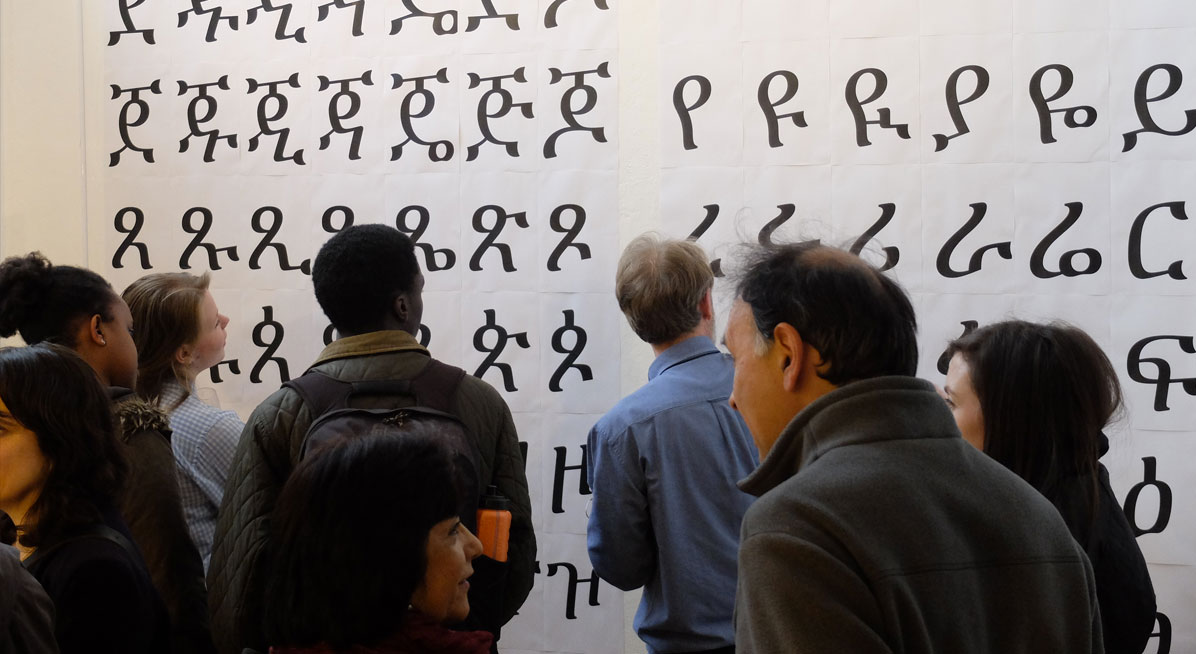
Algorithms - Ian McDonald
Project Leader Ian McDonald, Director, Research Centre for Film & Digital Media
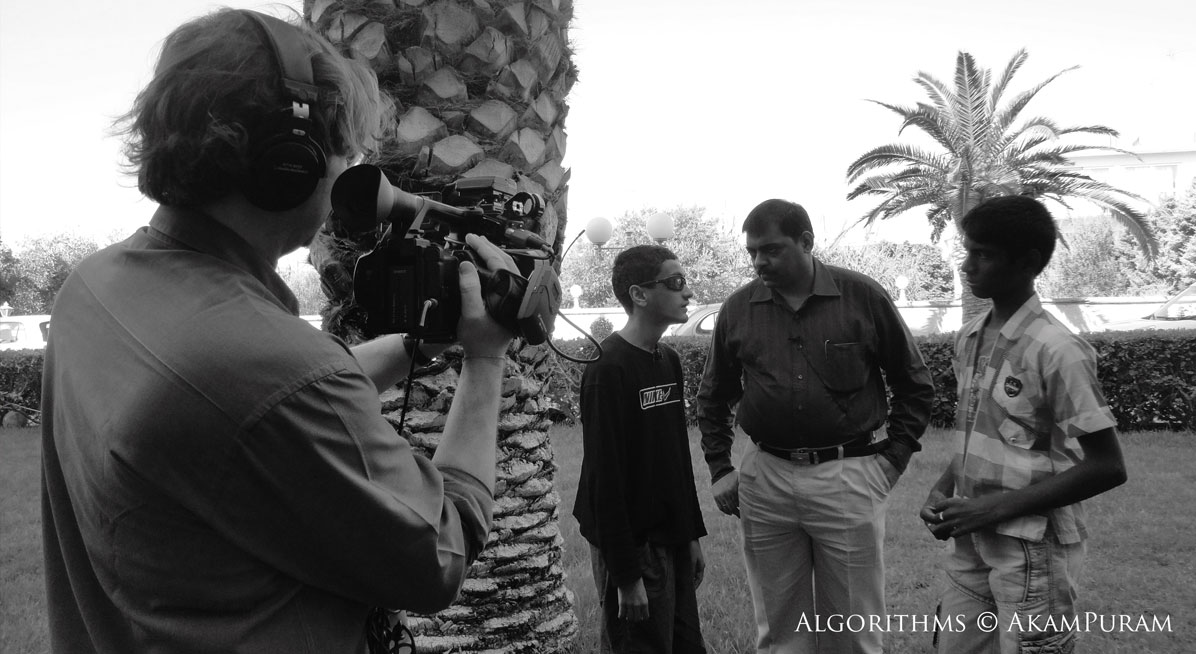
Creative Exchange (CX)
This project was funded by the Arts and Humanities Research Council. It brought together creative sector businesses and connected them with digital designers, major corporations and leading researchers in the Arts and Humanities.
Find out more on the Creative Exchange website.
Prison Letters - Kate Stobbart
This was a collaboration between Fine Art and Music. Love letters between a prisoner on death row and his female guard have been woven into a dramatic new mini opera.
This captivating true story got its first public showing in August 2013. The letters were initially uncovered by Newcastle University artist Lyn Hagan as part of a project into prison tattoo designs.
A point meant 100
One hundred appointments with people. Project lead Kate Stobbart met with anyone who wanted to participate, for 10-30 minutes.
The non verbal communication that took place in the 'A point meants' were the starting point for a 'live event', a group performance and a short film.
A point meant 100 - Kate Stobbart
One hundred appointments with people. Project lead Kate Stobbart met with anyone who wanted to participate, for 10-30 minutes.
The non verbal communication that took place in the 'A point meants' were the starting point for a 'live event', a group performance and a short film.
Walking Together - Dr Ben Jones
Walking Together was a project curated by Dr. Ben Jones as part of his creative enterprise Dingy Butterflies CIC and funded through NICAP, UnLtd and the Community Foundation. Dingy Butterflies works across central Gateshead developing high quality participatory art projects to consider the past, present and future of its social and physical environment. Working closely with residents and with local community and cultural organisations the aim is to increase creative engagement and participation within the community.
Working with artist Angela Kennedy Walking Together took as its starting point Bensham Grove Community Centre, its history and the community currently surrounding it. The invitation to respond as an artist, embraces the development of Kennedy’s body based practice examining embodiment. As a multi-disciplinary artist this includes performance, drawing, movement, dance, text and video as poetic responses to site, alongside an experiential practice, deeply rooted in social justice and community art principles.
From conversations Kennedy decided to invite local people to partake in two walks together in and around Bensham, taking in the history and changing geography of the area and become involved in shared arts activity in the form of collective poetry, drawing, sketching and observation. This would be a small offering to Bensham and the rich diversity of communities within it, as a way to gently discover people and place, and create simple conversations with one another, that might otherwise, not happen.
Kennedy hopes the walks offer a curiosity and respect for our own creative and physical responses to place that enable us to engage and get to know one another in a shared activity.
http://www.dingybutterflies.org/walking-together/
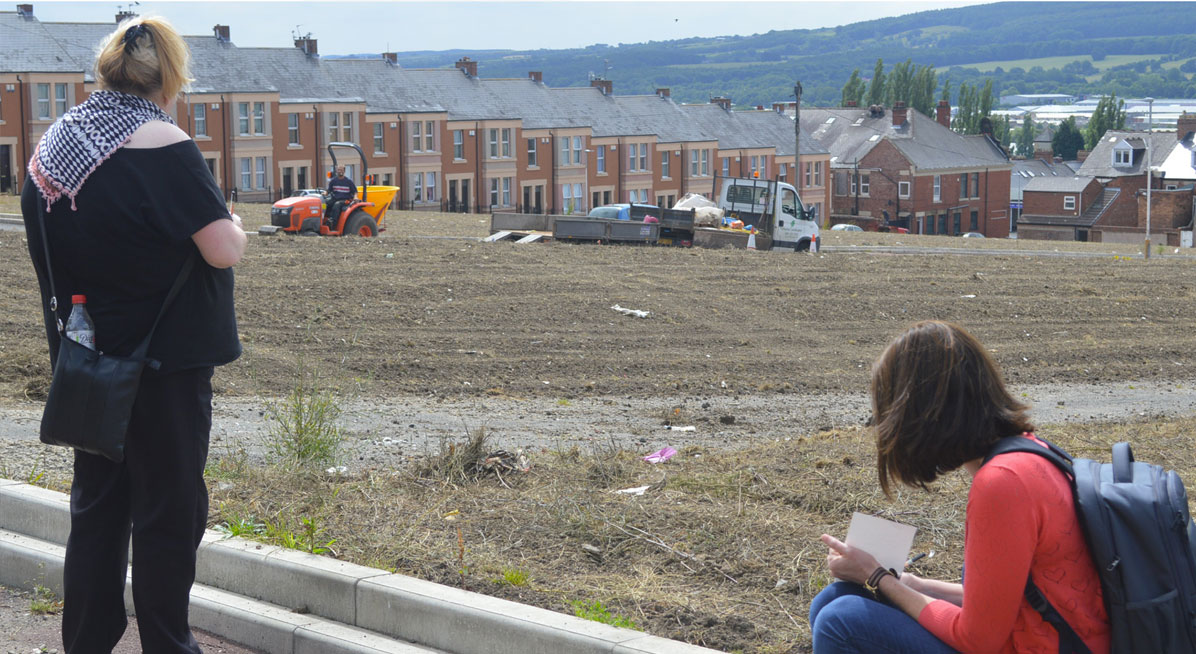
Murmurate - Tim Shaw & Sebastien Piquemal
Murmurate project leads were Tim Shaw and Sebastien Piquemal.
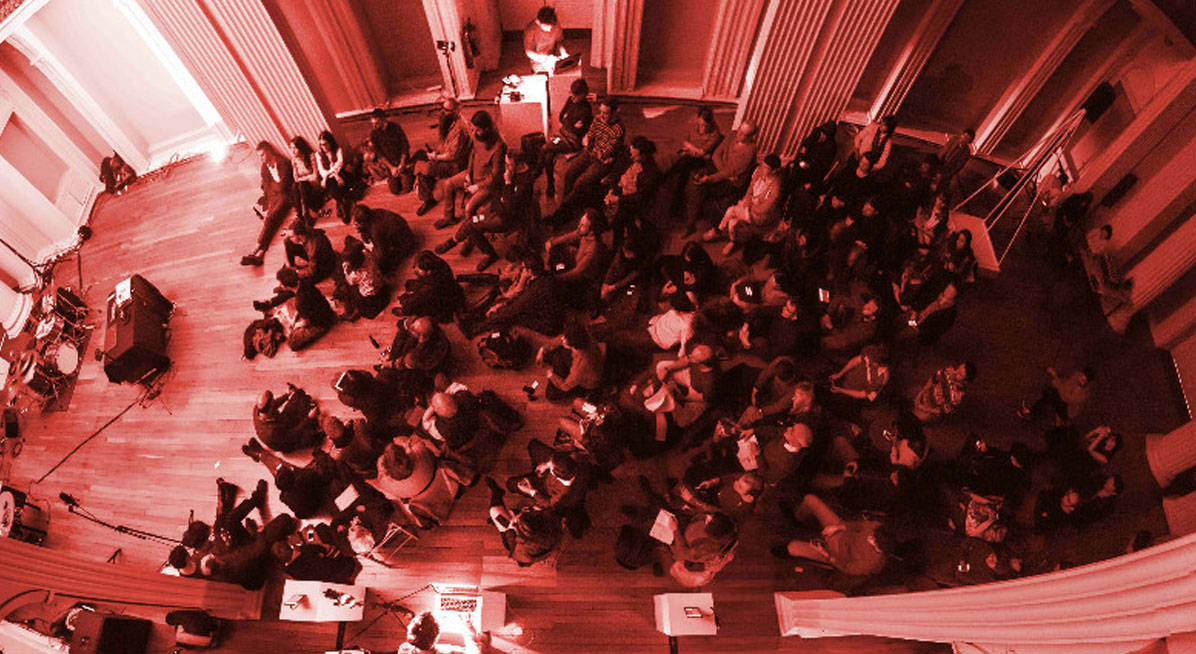
Dreyer's La Passion de Jeanne d'Arc: strangeness and perversion - Donald Greig
Donald Greig, project leader, assembled a collage of music from the period of Joan's life to accompany La Passion de Jeanne d'Arc (1928). Performed by The Orlando Consort, the vocal group of which he is the founding member.
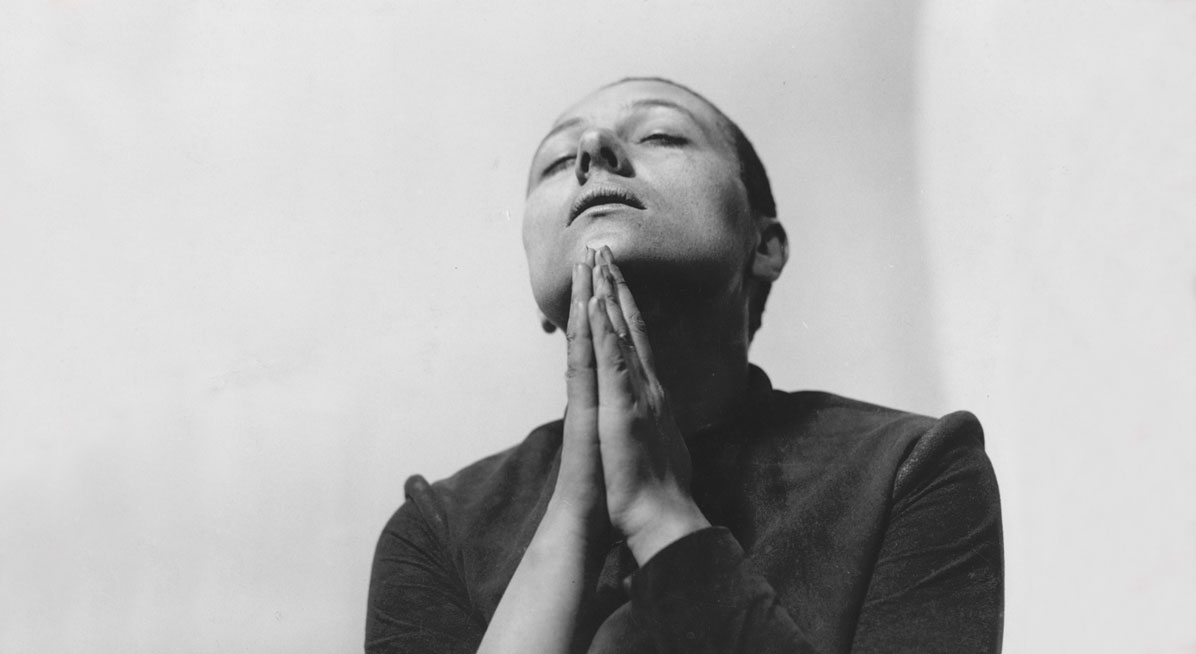
Beyond the Obvious
Contact us to find out more.
A Third Exhibit - Dr Ed Wainwright
Project lead for A Third Exhibit was Dr Ed Wainwright from the School of Architecture, Planning and Landscape.
Contact us to find out more.
Musee Imaginaire
Contact us to find out more.
Visiting Professor Mitchell Whitelaw
Contact us to find out more.
The Art of Mitochondrial Research - Corinne Lewis-Ward
Project Leader, Artist Corinne Lewis-Ward
Contact us to find out more.
Cap-a-Pie turns research into theatre
Performing Research is a collaboration between Newcastle University and theatre company Cap-a-Pie.
Contact us to find out more.
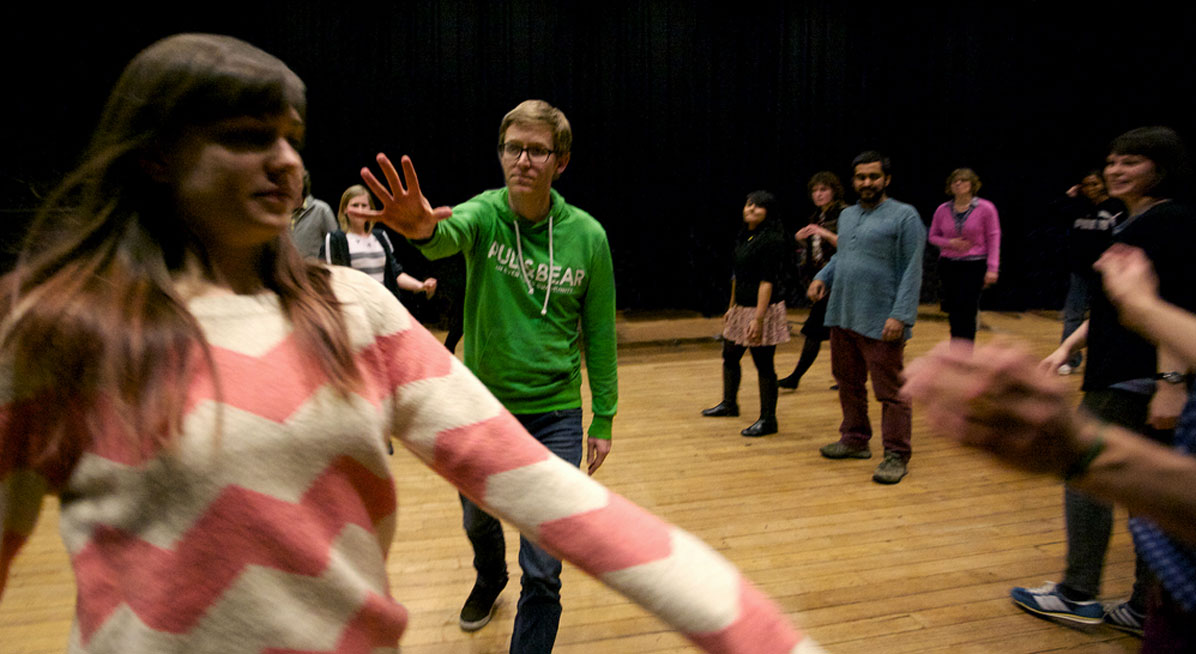
Dissident Voices - Alan Turnbull & Dr Tara Bergin
The project was a collaboration between artist Alan Turnbull (Fine Art) and the poet Tara Bergin (Lecturer in Creative Writing, Newcastle University).
Contact us to find out more.
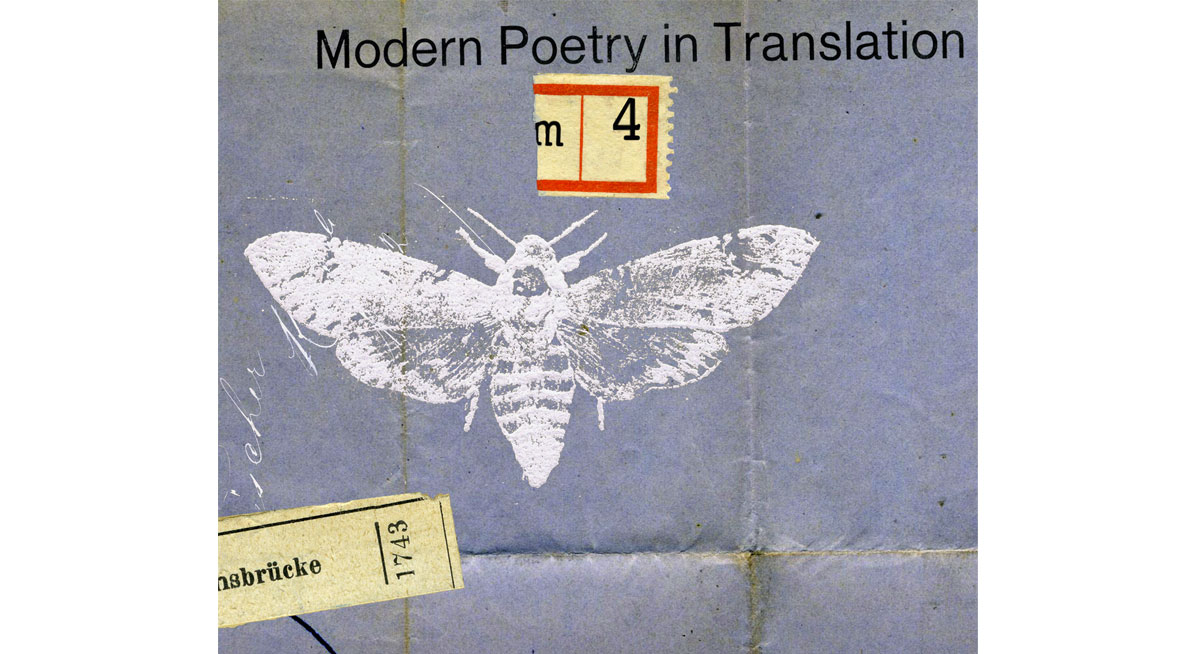
If you'd like to find out more about any of our past projects please contact us.
